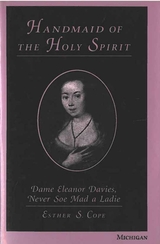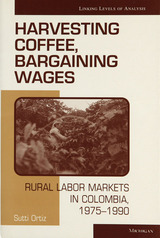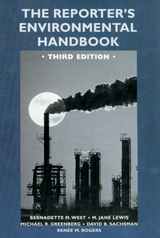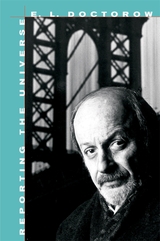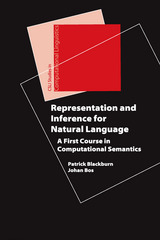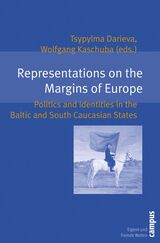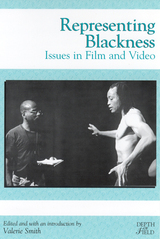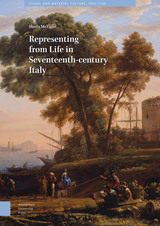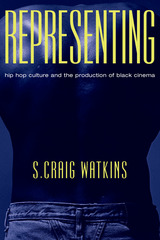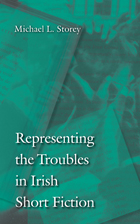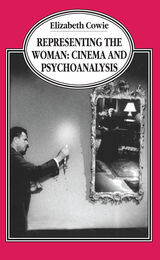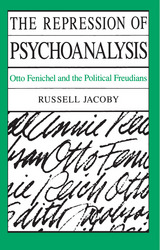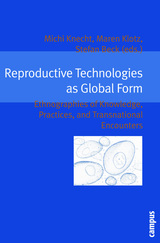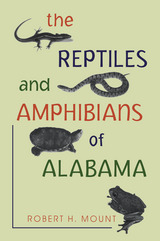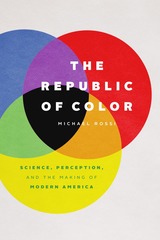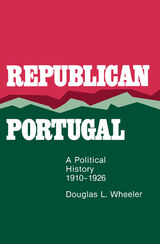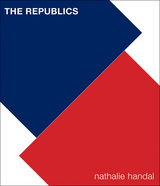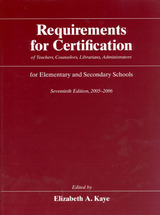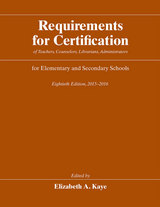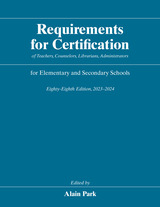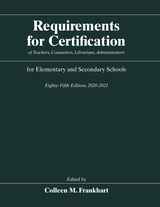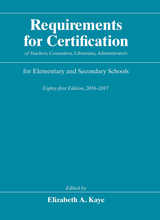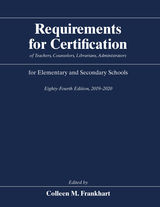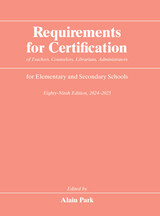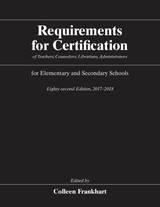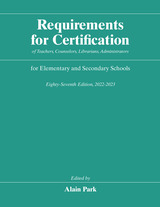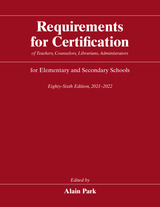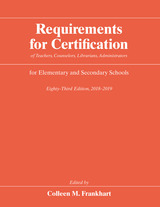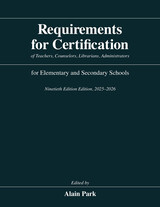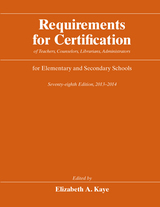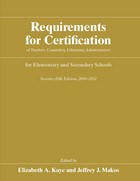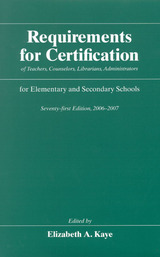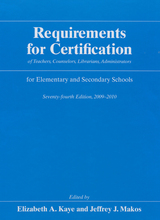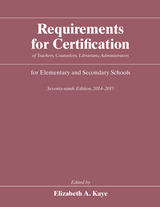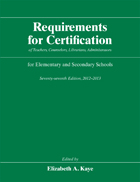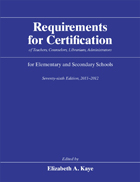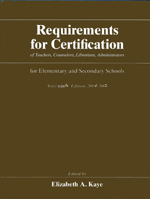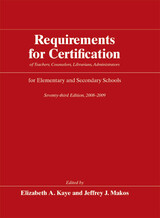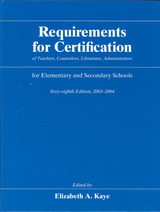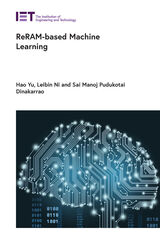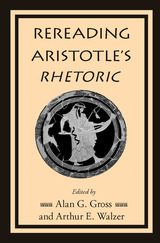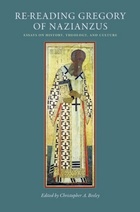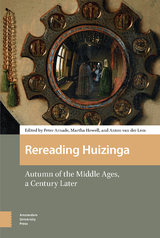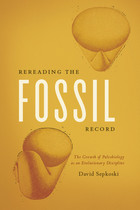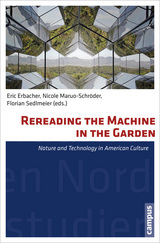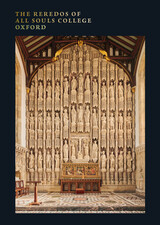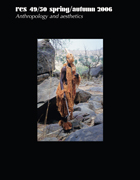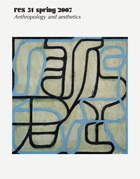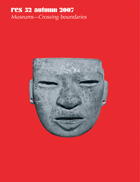The Reporter's Environmental Handbook: Third Edition
Bernadette M West, M. Jane Lewis, Michael R Greenberg, David B. Sachsman, and Renee M. Rogers
Rutgers University Press, 2003 When an environmental news story breaks, the first place to turn for background on the issue is The Reporter's Environmental Handbook, now available in an updated and expanded third edition. Here, journalists can find the fast facts they need to accurately cover complex and controversial environmental stories ranging from indoor and outdoor air quality to sprawl and bioterrorism.
 The Reporter's Handbook on Nuclear Materials, Energy & Waste Management
Michael R. Greenberg
Vanderbilt University Press, 2009 An essential reference for journalists, activists, and students, this book presents scientifically accurate and accessible overviews of 24 of the most important issues in the nuclear realm, including: health effects, nuclear safety and engineering, TMI and Chernobyl, nuclear medicine, food irradiation, transport of nuclear materials, spent fuel, nuclear weapons, global warming. Each "brief" is based on interviews with named scientists, engineers, or administrators in a nuclear specialty, and each has been reviewed by a team of independent experts. The objective is not to make a case for or against nuclear-related technologies, but rather to provide definitive background information. (The approach is based on that of The Reporter's Environmental Handbook, published in 1988, which won a special award for journalism from the Sigma Delta Chi Society of professional journalists.) Other features of the book include: a glossary of hundreds of terms, an introduction to risk assessment, environmental and economic impacts, and public perceptions, an article by an experienced reporter with recommendations about how to cover nuclear issues, quick guides to the history of nuclear power in the United States, important federal legislation and regulations, nuclear position statements, and key organizations, print and electronic resources.
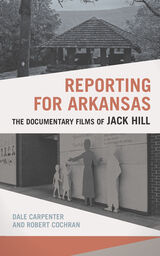 Reporting for Arkansas: The Documentary Films of Jack Hill
Dale Carpenter
University of Arkansas Press, 2022 Jack Hill was a pioneering Arkansas documentary filmmaker dedicated to sharing his state’s history with a wider public. Following a decade as an award-winning investigative journalist and news anchor at KAIT in Jonesboro, Hill was pushed out by new management for his controversial reporting on corruption in a local sheriff’s office. What seemed like a major career setback turned out to be an opportunity: he founded the production company TeleVision for Arkansas, through which he produced dozens of original films. Although Hill brought an abiding interest in education and public health to this work from the beginning, he found his true calling in topics based in Arkansas history. Convinced that a greater acquaintance with the state’s most significant historical events would nurture a greater sense of homegrown pride, Hill tirelessly crisscrossed the state to capture the voices of hundreds of Arkansans recalling significant chapters in the state’s history, such as the oil boom in El Dorado and Smackover, the crucial contributions of the Arkansas Ordnance Plant in Jacksonville during World War II, and the role of Rosenwald Schools in expanding educational opportunities. In Reporting for Arkansas, Dale Carpenter and Robert Cochran present a biography of Hill alongside an annotated selected filmography designed to accompany sixteen of his best films on subjects related to Arkansas history—all newly hosted online by the Center for Arkansas and Regional Studies at the University of Arkansas.
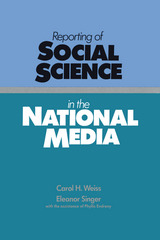 Reporting of Social Science in the National Media
Carol Weiss
Russell Sage Foundation, 1988 Policy makers, as well as the general public, are often unaware of social science research until a story about it appears in the national media. Even in official Washington, a staffer's report on social research may go unnoticed while a report in the Washington Post receives immediate attention. This study takes a systematic and revealing look at social science reporting. How do journalists hear about social science, and why do they select certain stories to cover and not others? How do journalistic standards for selection compare with social scientists' own judgments of merit? How do reporters attempt to ensure accuracy, and how freely do they introduce their own interpretations of social science findings? How satisfied are social scientists with the selection and accuracy of social science news? In Part I, Carol H. Weiss addresses these questions on the basis of personal interviews with social scientists and the journalists who wrote about their work. Part II, by Eleanor Singer, is based on an analysis of media content itself, and compares social science reporting over time (between 1970 and 1982) and across media (newspapers, newsmagazines, television). These two complementary perspectives combine to produce a thorough, realistic assessment of the way social science moves out of the academy and into the world of news.
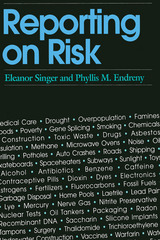 Reporting on Risk: How the Mass Media Portray Accidents, Diseases, Other Hazards
Eleanor Singer
Russell Sage Foundation, 1993 After acts of airline terrorism, air travel tends to drop dramatically—yet Americans routinely pursue the far riskier business of driving cards, where accidents resulting in death or injury are much more likely to occur. Reporting on Risk argues that this selective concern with danger is powerfully shaped by the media, whose coverage of potentially hazardous events is governed more by a need to excite the public than to inform it. Singer and Endreny survey a wide range of print and electronic media to provide an unprecedented look at how hundreds of different hazards are presented to the public—from toxic waste and food poisoning to cigarette smoking, from transportation accidents to famine, and from experimental surgery to communicable diseases. Their investigations raise thought-provoking questions about what the media tell us about modern risks, which hazards are covered and which ignored, and how the media determine when hazards should be considered risky. Are natural hazards reported differently than man-made hazards? Is greater emphasis placed on the potential benefits or the potential drawbacks of complex new technologies? Are journalists more concerned with reporting on unproven cures or informing the public about preventative measures? Do newspapers differ from magazines and television in their risk reporting practices? Reporting on Risk investigates how the media place blame for disasters, and looks at how the reporting of risks has changed in the past twenty-five years as such hazards as nuclear power, birth control methods, and industrial by-products have grown in national prominence. The authors demonstrate that the media often fail to report on risks until energized by the occurrence of some disastrous or dramatic event—the Union Carbide pesticide leak in Bhopal, the Challenger explosion, the outbreak of famine in Somalia, or the failed transplant of a baboon heart to "Baby Fae." Sustained attention to these hazards depends less on whether the underlying issues have been resolved than on whether they continue to unfold in newsworthy events. Reporting on Risk examines the accuracy and the amount of information we receive about our environment. It offers a critical perspective on how our perceptions of risk, as shaped by the media, may contribute to misguided individual and public choices for action and prevention in an increasingly complex world. The authors' probing assessment of how the media report a vast array of risks offers insights useful to journalists, policy analysts, risk specialists, legislators, and concerned citizens.
 Reporting the Chinese Revolution: The Letters of Rayna Prohme
Gregor Benton and Arthur J. Knodel
Pluto Press, 2007 Rayna and her husband Bill edited the Kuomintang's English-language newspaper in Wuhan. Rayna's account of her intimate involvement in the Chinese Revolution brings to life the eventful Wuhan years of 1926-27, which shaped the revolution's course. Her letters illuminate from a personal angle the battle for China's future and include remarkable portraits of some of the people who shaped the Communist and Nationalist movements of the time.
The book consists of letters Prohme wrote to her closest friend and her husband in the period immediately before, during and after the Wuhan interlude. Her reporting brought her into contact with many major political figures including Madam Sun Yat-sen (a prominent figure in the opposition to Chiang Kai-shek) and Mikhail Borodin (a chief Soviet advisor in China).
This book provides an unusual and often moving insight into a fascinating period in modern Chinese history.
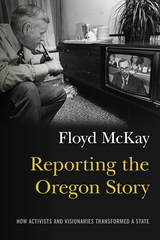 Reporting the Oregon Story: How Activists and Visionaries Transformed a State
Floyd J. McKay
Oregon State University Press, 2016 Oregon entered a new era in 1964 with the election of Tom McCall as Secretary of State and Bob Straub as State Treasurer. Their political rivalry formed the backdrop for two of Oregon’s most transformative decades, as they successively fought for, lost, and won the governorship. Veteran Oregon journalist Floyd McKay had a front-row seat.
As a political reporter for The Oregon Statesman in Salem, and then as news analyst for KGW-TV in Portland, McKay was known for asking tough questions and pulling no punches. His reporting and commentaries ranged from analysis of the “Tom and Bob” rivalry, to the Vietnam War’s impact on Senators Wayne Morse and Mark Hatfield and the emergence of a new generation of Portland activists in the 1970s.
McKay and his colleagues were on the beaches as Oregon crafted its landmark Beach Bill, ensuring the protection of beaches for public use. They watched as activists turned back efforts to build a highway on the sand at Pacific City. Pitched battles over Oregon’s Bottle Bill, and the panic-inducing excitement of “Vortex”—the nation’s only state-sponsored rock festival—characterized the period. Covering the period from 1964-1986, McKay remembers the action, the players and the consequences, in this compelling and personal account.
As major actors fade from the scene and new leaders emerge, McKay casts a backwards glance at enduring Oregon legends. Half a century later, amid today’s cynicism and disillusionment with media, politics, and politicians, Reporting the Oregon Story serves as a timely reminder that charged politics and bitter rivalries can also come hand-in-hand with lasting social progress.
Reporting the Oregon Story will be relished by those who lived the history, and it will serve as a worthy introduction to Oregonians young and old who want a first-hand account of Oregon’s mid- twentieth-century political history and legislative legacy.
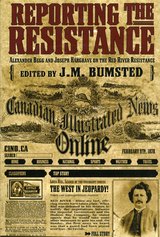 Reporting the Resistance: Alexander Begg and Joseph Hargrave on the Red River Resistance
Alexander Begg
University of Manitoba Press, 2003 Reporting the Resistance brings together two first-person accounts to give a view "from the ground" of the developments that shocked Canada and created the province of Manitoba. In 1869 and 1870, Begg and Hargrave were regular correspondents for (respectively) the Toronto Globe and the Montreal Herald. While neither man was a committed supporter of the Metis or Louis Riel, each gives a more complex, and more sympathetic, view of the resistance that is commonly expected from the Anglophone community of Red River. They describe, often from very different perspectives, the events of the resistance, as well as give insider accounts of the social and political background. Largely unreprinted until now, this correspondence remains a relatively untapped resource for contemporary views of the resistance. These are the Red River's own accounts, and are often quite different from the perspective of eastern observers.
Reporting the Universe
E. L. Doctorow
Harvard University Press, 2003 "The writer," according to Emerson, "believes all that can be thought can be written...In his eyes a man is the faculty of reporting, and the universe is the possibility of being reported." And what writer worth his name, E. L. Doctorow asks, will not seriously, however furtively, take on the universe? Human consciousness, personal history, American literature, religion, and politics--these are the far-flung coordinates of the universe that Doctorow reports here, a universe that uniquely and brilliantly reflects our contemporary scene.
 Reporting the Wars
Joseph J. Mathews
University of Minnesota Press, 1957 Reporting the Wars was first published in 1957. Minnesota Archive Editions uses digital technology to make long-unavailable books once again accessible, and are published unaltered from the original University of Minnesota Press editions. News of the wars has always intrigued the public, from the time of the Napoleonic wars up to the present. In this period of the last century and a half, however, the character both of the public and of the news has changed. Mr. Mathews traces the history of war news coverage from John Bell, who, in 1794, was probably the first war correspondent, to Ernie Pyle of World War II fame. The account is colorful, since war correspondents are notably adventurous individuals, and it is significant for a basic understanding of history, since the reporting of war news has represented a constant struggle against the forces of censorship and propaganda. The book is illustrated with newspaper cartoons.
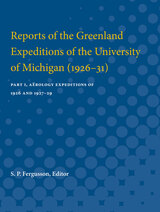 Reports of the Greenland Expeditions of the University of Michigan (1926-31): Part I, Aërology Expeditions of 1926 and 1927-29
S.P. Fergusson, Editor
University of Michigan Press, 1931 The three Greenland Expeditions of the University of Michigan (1926–29) were launched to study the meteorological conditions over and about the inland-ice dome, which so nearly covered the continent. The resulting studies depended upon pilot-balloons, supplemented in 1926 by registering balloons—ballons sondes. Earlier studies based on the observations made by explorers clearly indicated that over this northern ice-mass is located a fixed permanent and powerful anticyclone (glacial anticyclone), which as a reversing mechanism of the general circulation may be regarded as a northern wind pole of the earth in the same sense that the similar mechanism over the Antarctic continent may be looked upon as a southern wind pole. Earlier studies had also indicated that the success of the studies would depend very largely upon the location of the observing station. It was clear from the start that the meteorological records, particularly the direction and force of the wind made regularly at a few coastal settlements (generally partly sheltered within the mouths of fjords), would afford quite misleading indications. Thus the portion of Greenland selected for the studies was the area where the land ribbon surrounding the inland-ice is the widest, the Holstensborg district in the southwest, where this land stretches out to a width of close to a hundred miles.
 (Re)Positioning Site Dance: Local Acts, Global Perspectives
Edited by Karen Barbour, Vicky Hunter, and Melanie Kloetzel
Intellect Books, 2019 Site-based dance performance and sited movement explorations implicate dance makers, performers, and audience members in a number of dialogical processes between body, site, and environment. This book aims to articulate international approaches to the making, performing, and theorizing of site-based dance. Drawing on perspectives from three practitioner-academics based in three distinct world regions--Europe, North America, and Oceania--the authors explore a range of practices that engage with socio-cultural, political, ecological, and economic discourses, and demonstrate how these discourses both frame and inform processes of site dance making as well as shape the ways in which such interventions are conceived and evaluated. Intended for artists, scholars, and students, (Re)Positioning Site Dance is an important addition to the theoretical discourse on place and performance in an era of global socio-political and ecological transformation.
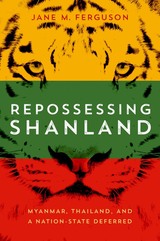 Repossessing Shanland: Myanmar, Thailand, and a Nation-State Deferred
Jane M. Ferguson
University of Wisconsin Press, 2022 Around five million people across Southeast Asia identify as Shan. Though the Shan people were promised an independent state in the 1947 Union of Burma constitution, successive military governments blocked their liberation. From 1958 onward, insurgency movements, including the Shan United Revolution Army, have fought for independence from Myanmar. Refugees numbering in the hundreds of thousands fled to Thailand to escape the conflict, despite struggling against oppressive citizenship laws there. Several decades of continuous rebellion have created a vacuum in which literati and politicians have constructed a virtual Shan state that lives on in popular media, rock music, and Buddhist ritual.
Based on close readings of Shan-language media and years of ethnographic research in a community of soldiers and their families, Jane M. Ferguson details the origins of these movements and tells the story of the Shan in their own voices. She shows how the Shan have forged a homeland and identity during great upheaval by using state building as an ongoing project of resistance, resilience, and accommodation within both countries. In avoiding a good/bad moral binary and illuminating cultural complexities, Repossessing Shanland offers a fresh perspective on identity formation, transformation, and how people understand and experience borderlands today.
 Repossessions: Psychoanalysis and the Phantasms of Early Modern Culture
Timothy Murray and Alan K. Smith, Editors
University of Minnesota Press, 1998 Repossessions was first published in 1998. Minnesota Archive Editions uses digital technology to make long-unavailable books once again accessible, and are published unaltered from the original University of Minnesota Press editions. A double-edged critical forum, this volume brings early modern culture and psychoanalysis into revisionist dialogue with each other. The authors reflect on how psychoanalysis remains "possessed" by its incorporation of early modern mythologies, visions, credos, and phantasms. Their essays explore the conceptual and ideological foundations of psychoanalysis while articulating fresh insights into the vicissitudes of autobiography, translation, mourning, and eroticism in the transitional period from the waning of feudalism to the emergence of capitalism. Employing a broad spectrum of the most recent, Continental psychoanalytic approaches, the book covers topics and figures ranging from King James to Leonardo, demonology to cartography, astronomy to cross-dressing, and mythology to biology. Its detailed readings of Boccaccio, Ficino, Finé, Michelangelo, Montaigne, and others dramatically reassess the foundational concepts of cultural history, secularization, autobiography, reason, and government. Through a sustained focus on visual and verbal residues of personal and cultural trauma, the essays generate innovative analyses of the interrelation of writing, graphic space, self, and social identification in early modern texts, paintings, maps, and other artifacts. Contributors: Elizabeth J. Bellamy, Tom Conley, Mitchell Greenberg, Kathleen Perry Long, Julia Reinhard Lupton, Christopher Pye, Juliana Schiesari. Timothy Murray is professor of English and director of graduate studies in Film and Video at Cornell University. Alan K. Smith is assistant professor in the Department of Languages and Literature at the University of Utah.
 Represent and Destroy: Rationalizing Violence in the New Racial Capitalism
Jodi Melamed
University of Minnesota Press, 2011 In the global convulsions in the aftermath of World War II, one dominant world racial order broke apart and a new one emerged. This is the story Jodi Melamed tells in Represent and Destroy, portraying the postwar racial break as a transition from white supremacist modernity to a formally antiracist liberal capitalist modernity in which racial violence works normatively by policing representations of difference. Following the institutionalization of literature as a privileged domain for Americans to get to know difference—to describe, teach, and situate themselves with respect to race—Melamed focuses on literary studies as a cultural technology for transmitting liberal racial orders. She examines official antiracism in the United States and finds that these were key to ratifying the country’s global ascendancy. She shows how racial liberalism, liberal multiculturalism, and neoliberal multiculturalism made racism appear to be disappearing, even as they incorporated the assumptions of global capitalism into accepted notions of racial equality. Yet Represent and Destroy also recovers an anticapitalist “race radical” tradition that provides a materialist opposition to official antiracisms in the postwar United States—a literature that sounds out the violence of liberal racial orders, relinks racial inequality to material conditions, and compels desire for something better than U.S. multiculturalism.
Representation and Inference for Natural Language: A First Course in Computational Semantics
Patrick Blackburn and Johan Bos
CSLI, 2005 How can computers distinguish the coherent from the unintelligible, recognize new information in a sentence, or draw inferences from a natural language passage? Computational semantics is an exciting new field that seeks answers to these questions, and this volume is the first textbook wholly devoted to this growing subdiscipline. The book explains the underlying theoretical issues and fundamental techniques for computing semantic representations for fragments of natural language. This volume will be an essential text for computer scientists, linguists, and anyone interested in the development of computational semantics.
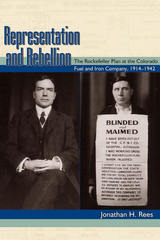 Representation and Rebellion: The Rockefeller Plan at the Colorado Fuel and Iron Company, 1914-1942
Jonathan H. Rees
University Press of Colorado, 2010 In response to the tragedy of the Ludlow Massacre, John D. Rockefeller Jr. introduced one of the nation’s first employee representation plans (ERPs) to the Colorado Fuel and Iron Company in 1915. With the advice of William Mackenzie King, who would go on to become prime minister of Canada, the plan—which came to be known as the Rockefeller Plan—was in use until 1942 and became the model for ERPs all over the world.In Representation and Rebellion Jonathan Rees uses a variety of primary sources—including records recently discovered at the company’s former headquarters in Pueblo, Colorado—to tell the story of the Rockefeller Plan and those who lived under it, as well as to detail its various successes and failures. Taken as a whole, the history of the Rockefeller Plan is not the story of ceaseless oppression and stifled militancy that its critics might imagine, but it is also not the story of the creation of a paternalist panacea for labor unrest that Rockefeller hoped it would be.Addressing key issues of how this early twentieth-century experiment fared from 1915 to 1942, Rees argues that the Rockefeller Plan was a limited but temporarily effective alternative to independent unionism in the wake of the Ludlow Massacre. The book will appeal to business and labor historians, political scientists, and sociologists, as well as those studying labor and industrial relations.
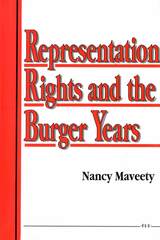 Representation Rights and the Burger Years
Nancy Maveety
University of Michigan Press, 1991 In Representation Rights and the Burger Years, political scientist Nancy Maveety tackles the constitutional meaning of "fair and effective" representation rights and evaluates the specific contributions that the Supreme Court made to this definition during the Burger era. The Court of Chief Justice Warren Burger has been described as one that made no distinctive jurisprudential contributions. It has been dismissed as a court overshadowed by both its predecessor and its successor. By contrast, Maveety argues that the Burger Court in fact revolutionized constitutional understandings of political representation, expanding, in particular, the judicial scrutiny of political institutions. Moving beyond the "one person, one vote" reapportionment initiated by the Warren Court, it opened the way for the articulation of group-based constitutional representation rights. This group-based approach to representation questions broadened groups' constitutional claims to equal political influence. Yet, as Maveety perceptively shows, this broader interpretation of "representable interests" was grounded in mainstream American conceptions of political representation. The great value of Maveety's study is the presentation of a "typology of group representation," which explains and validates the Burger Court's work on representation rights. This typology, drawn from American history, political theory, and political practice, offers a new approach for evaluating the precedental record of the Burger years and a sophisticated framework for understanding the interaction between constitutional law and politics.
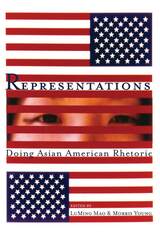 Representations: Doing Asian American Rhetoric
LuMing Mao and Morris Young
Utah State University Press, 2008 Asian American rhetorics, produced through cultural contact between Asian traditions and US English, also comprise a dynamic influence on the cultural conditions and practices within which they move. Though always interesting to linguists and "contact language" scholars, in an increasingly globalized era, these subjects are of interest to scholars in a widening range of disciplines—especially those in rhetoric and writing studies.
Mao, Young, and their contributors propose that Asian American discourse should be seen as a spacious form, one that deliberately and selectively incorporates Asian “foreign-ness” into the English of Asian Americans. These authors offer the concept of a dynamic “togetherness-in-difference” as a way to theorize the contact and mutual influence. Chapters here explore a rich diversity of histories, theories, literary texts, and rhetorical practices. Collectively, they move the scholarly discussion toward a more nuanced, better balanced, critically informed representation of the forms of Asian American rhetorics and the cultural work that they do.
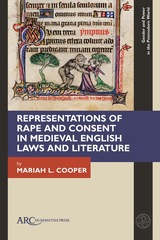 Representations of Rape and Consent in Medieval English Laws and Literature
Mariah L. Cooper
Arc Humanities Press, 2024 How did legal, literary, and scientific discourses intersect to define sexual non-consent in the Middle Ages? How did popular cultural assumptions about sexuality and gender influence actual medieval criminal proceedings? And how far have we really come today? This book explores medieval English understandings of rape, consent, and the assumed mind-body dichotomy of rapists and rape victims. It demonstrates how laws, trial records, popular romance, and ecclesiastic and medical texts defined sexual consent and non-consent, and the consequences of such ideologies. By comparing episodes of rape and consent across diverse primary sources, it considers important medieval English rape myths and victim-blaming stereotypes. Significantly, it also highlights the cultural trepidation associated with believing women’s accusations of rape and questions how much “progress” we have made since then.
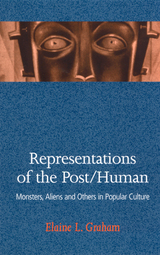 Representations of the Post/Human: Monsters, Aliens, and Others in Popular Culture
Graham, Elaine L.
Rutgers University Press, 2002 Microchips. Genetic modification of plants. Cloning. Advances in technology promise to shape our lives more profoundly than ever before. Exciting new discoveries in reproductive, genetic, and information technologies all serve to call into question the immutability of the boundaries between humans, animals, and machines. The category of the “posthuman” reflects the implications of such new technologies on contemporary culture, especially in their capacity to reconfigure the human body and to challenge our most fundamental understandings of human nature. Elaine L. Graham explores these issues as they are expressed within popular culture and the creative arts. From the myth of Prometheus and the Gothic horror of Frankenstein’s monster to contemporary postmodern science fiction, a gallery of fantastic creatures haunts Western myth, religion, and literature. They serve to connect contemporary debates with enduring concerns about the potential—and the limits—of human creativity. This book breaks new ground in drawing together a wide range of literature on new technologies and their ethical implications. In her explorations of the monstrous and the cyborg, Graham covers the Jewish legend of the golem, the Human Genome Project, Star Trek: Next Generation, Star Trek: Voyager, Fritz Lang’s Metropolis, Donna Haraway’s cyborg writing, andmany other related topics. This book will interest students in cultural studies, literature, ethics, religion, information technology, and the life sciences.
Representations of Working in Arts Education: Stories of Learning and Teaching
Narelle Lemon, Susanne Garvis, and Christopher Klopper
Intellect Books, 2014 Arts education provides students with opportunities to build knowledge and skills in self-expression, imagination, creative and collaborative problem solving, and creation of shared meanings. Engagement in arts education has also been said to positively affect overall academic achievement, and the development of empathy. This book provides key insights from stakeholders across the teaching and learning spectrum and offers examples of pedagogical practice to those interested in facilitating arts education.
Representations on the Margins of Europe: Politics and Identities in the Baltic and South Caucasian States
Edited by Tsypylma Darieva and Wolfgang Kaschuba
Campus Verlag, 2007 Since the first Baltic nations joined the European Union, debates about reorganizing post-Soviet republics have grown increasingly heated. How do citizens in the Baltic and South Caucasian states cope with EU expansion and the feeling of existing simultaneously “inside” and “outside” Europe? Based on ethnographies and archival work, Representations on the Margins of Europe offers new insights into shifts in the national identity, cultural geography, and symbolic boundaries. This exploration of local responses to Europe’s new hegemony will appeal to anyone interested in anthropology, history, and politics.
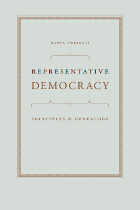 Representative Democracy: Principles and Genealogy
Nadia Urbinati
University of Chicago Press, 2006 It is usually held that representative government is not strictly democratic, since it does not allow the people themselves to directly make decisions. But here, taking as her guide Thomas Paine’s subversive view that “Athens, by representation, would have surpassed her own democracy,” Nadia Urbinati challenges this accepted wisdom, arguing that political representation deserves to be regarded as a fully legitimate mode of democratic decision making—and not just a pragmatic second choice when direct democracy is not possible.
As Urbinati shows, the idea that representation is incompatible with democracy stems from our modern concept of sovereignty, which identifies politics with a decision maker’s direct physical presence and the immediate act of the will. She goes on to contend that a democratic theory of representation can and should go beyond these identifications. Political representation, she demonstrates, is ultimately grounded in a continuum of influence and power created by political judgment, as well as the way presence through ideas and speech links society with representative institutions. Deftly integrating the ideas of such thinkers as Rousseau, Kant, Emmanuel Joseph Sieyès, Paine, and the Marquis de Condorcet with her own, Urbinati constructs a thought-provoking alternative vision of democracy.
 Representative Democracy: Public Policy and Midwestern Legislatures in the Late Nineteenth Century
Ballard C. Campbell
Harvard University Press, 1980 The rise of an immensely powerful federal government in the twentieth century has tended to obscure the importance of state and local government in American history. Yet government at these lesser levels had the most direct and continuous effect on the lives of ordinary citizens. Through an analysis of late-nineteenth-century state legislatures in Illinois, Iowa, and Wisconsin,Ballard Campbell has written what one expert has called "the best book on legislative politics, past or present." The period he examines was one of rapid change and great challenge. Urbanization, industrialization, and increasing national integration forced innumerable difficult and important decisions on state legislators. Campbell is sensitive to these stresses on law-making, and skillfully analyzes the interplay between personal and constituent factors that affected lawmakers.
The author differentiates clearly between local and general aspects of state policymaking, giving full consideration to its more subjective and idiosyncratic elements. His comparison of partisan, economic, urban, ethnocultural, and regional influences on legislative behavior will serve as a model for all future studies.
By closely examining the substantive dimension of the governmental process and its relation to mass politics, Representative Democracy advances "the new political history." Campbell's discussion of legislative composition and procedure, the content and context of contested issues, and responses to these issues challenges numerous stereotypes about American state legislatures.
 Representative Men: Seven Lectures
Ralph Waldo Emerson
Harvard University Press, 1996 "At first reading, Representative Men seems the most alien of Emerson's books. First published in 1850 (having taken form over the five preceding years as a series of lectures intended as 'winter evening entertainments'), it was inspired by the romantic belief that there exists a 'general mind' that expresses itself with special intensity through certain individual lives. It was an appreciation of genius as a quality distributed to the few for the benefit of the many. When, according to Longfellow, Emerson began to speak on these themes in Boston in 1845, the Odeon theater was jammed with 'old men and young, bald heads and flowing transcendental locks, matrons and maidens, misanthropists and lovers.' The crowds were rapt and grateful, as were their counterparts two years later in England where the lecture series continued...
This edition of Representative Men is reproduced from the fourth volume of The Collected Works of Ralph Waldo Emerson, text established by Douglas Emory Wilson.
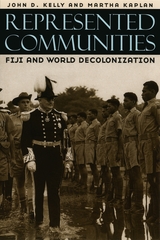 Represented Communities: Fiji and World Decolonization
John D. Kelly and Martha Kaplan
University of Chicago Press, 2001 In 1983 Benedict Anderson's Imagined Communities revolutionized the anthropology of nationalism. Anderson argued that "print capitalism" fostered nations as imagined communities in a modular form that became the culture of modernity.
Now, in Represented Communities, John D. Kelly and Martha Kaplan offer an extensive and devastating critique of Anderson's depictions of colonial history, his comparative method, and his political anthropology. The authors build a forceful argument around events in Fiji from World War II to the 2000 coups, showing how focus on "imagined communities" underestimates colonial history and obscures the struggle over legal rights and political representation in postcolonial nation-states. They show that the "self-determining" nation-state actually emerged with the postwar construction of the United Nations, fundamentally changing the politics of representation.
Sophisticated and impassioned, this book will further anthropology's contribution to the understanding of contemporary nationalisms.
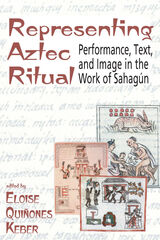 Representing Aztec Ritual: Performance, Text, and Image in the Work of Sahagun
Eloise Quiñones Keber
University Press of Colorado, 2020 Arriving in Mexico less than a decade after the Spanish conquest of 1521, the Franciscan missionary Bernardino de Sahagún not only labored to supplant native religion with Christianity, he also gathered voluminous information on virtually every aspect of Aztec (Nahua) life in contact-period Mexico. His pioneering ethnographic work relied on interviews with Nahua elders and the assistance of a younger generation of bicultural, missionary-trained Nahuas. Sahagún's remarkably detailed descriptions of Aztec ceremonial life offer the most extensive account of a non-Western ritual system recorded before modern times. Representing Aztec Ritual: Performance, Text, and Image in the Work of Sahagún uses Sahagún's corpus as a starting point to focus on ritual performance, a key element in the functioning of the Aztec world. With topics ranging from the ritual use of sand and paper to the sacrifice of women, contributors explore how Aztec rites were represented in the images and texts of documents compiled under colonial rule and the implications of this European filter for our understanding of these ceremonies. Incorporating diverse disciplinary perspectives, contributors include Davíd Carrasco, Philip P. Arnold, Kay Read, H. B. Nicholson, Eduardo Matos Moctezuma, Guilhem Olivier, Doris Heyden, and Eloise Quiñones Keber.
Representing Blackness: Issues in Film and Video
Smith, Valerie
Rutgers University Press, 1997 The essays in this collection provide a variety of perspectives on black representation and questions of racial authenticity in mainstream as well as African American independent cinema. This volume includes seminal essays on racial stereotypes, trenchant critiques of that discourse, original essays on important directors such as Haile Gerima and Charles Burnett, and an insightful discussion of black gay and lesbian film and video. The contributors include Donald Bogle, Thomas Cripps, Jane Gaines, Nathan Grant, Stuart Hall, Tommy L. Lott, Wahneema Lubiano, Mike Murashige, Valerie Smith, James Snead, and David Van Leer. This volume is an important contribution to the Depth of Field series and should be indispensible for courses and individual scholars in film and multicultural studies. The book contains a mix of original and previously published pieces.
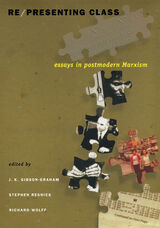 Re/presenting Class: Essays in Postmodern Marxism
J . K. Gibson-Graham, Stephen Resnick, and Richard Wolff, eds.
Duke University Press, 2001 Re/presenting Class is a collection of essays that develops a poststructuralist Marxian conception of class in order to theorize the complex contemporary economic terrain. Both building upon and reconsidering a tradition that Stephen Resnick and Richard Wolff—two of this volume’s editors—began in the late 1980s with their groundbreaking work Knowledge and Class, contributors aim to correct previous research that has largely failed to place class as a central theme in economic analysis. Suggesting the possibility of a new politics of the economy, the collection as a whole focuses on the diversity and contingency of economic relations and processes. Investigating a wide range of cases, the essays illuminate, for instance, the organizational and cultural means by which unmeasured surpluses—labor that occurs outside the formal workplace‚ such as domestic work—are distributed and put to use. Editors Resnick and Wolff, along with J. K. Gibson-Graham, bring theoretical essays together with those that apply their vision to topics ranging from the Iranian Revolution to sharecropping in the Mississippi Delta to the struggle over the ownership of teaching materials at a liberal arts college. Rather than understanding class as an element of an overarching capitalist social structure, the contributors—from radical and cultural economists to social scientists—define class in terms of diverse and ongoing processes of producing, appropriating, and distributing surplus labor and view class identities as multiple, changing, and interacting with other aspects of identity in contingent and unpredictable ways. Re/presenting Class will appeal primarily to scholars of Marxism and political economy. Contributors. Carole Biewener, Anjan Chakrabarti, Stephen Cullenberg, Fred Curtis, Satyananda Gabriel, J. K. Gibson-Graham, Serap Kayatekin, Bruce Norton, Phillip O’Neill, Stephen Resnick, David Ruccio, Dean Saitta, Andriana Vlachou, Richard Wolff
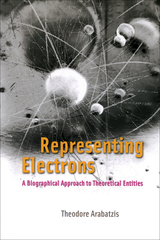 Representing Electrons: A Biographical Approach to Theoretical Entities
Theodore Arabatzis
University of Chicago Press, 2005 Both a history and a metahistory, Representing Electrons focuses on the development of various theoretical representations of electrons from the late 1890s to 1925 and the methodological problems associated with writing about unobservable scientific entities.
Using the electron—or rather its representation—as a historical actor, Theodore Arabatzis illustrates the emergence and gradual consolidation of its representation in physics, its career throughout old quantum theory, and its appropriation and reinterpretation by chemists. As Arabatzis develops this novel biographical approach, he portrays scientific representations as partly autonomous agents with lives of their own. Furthermore, he argues that the considerable variance in the representation of the electron does not undermine its stable identity or existence.
Raising philosophical issues of contentious debate in the history and philosophy of science—namely, scientific realism and meaning change—Arabatzis addresses the history of the electron across disciplines, integrating historical narrative with philosophical analysis in a book that will be a touchstone for historians and philosophers of science and scientists alike.
Representing from Life in Seventeenth-century Italy
Sheila McTighe
Amsterdam University Press, 2020 In drawing or painting from live models and real landscapes, more was at stake for artists in early modern Italy than achieving greater naturalism. To work with the model in front of your eyes, and to retain their identity in the finished work of art, had an impact on concepts of artistry and authorship, the authority of the image as a source of knowledge, the boundaries between repetition and invention, and even the relation of images to words. This book focuses on artists who worked in Italy, both native Italians and migrants from northern Europe. The practice of depicting from life became a self-conscious departure from the norms of Italian arts. In the context of court culture in Rome and Florence, works by artists ranging from Caravaggio to Claude Lorrain, Pieter van Laer to Jacques Callot, reveal new aspects of their artistic practice and its critical implications.
Representing: Hip Hop Culture and the Production of Black Cinema
S. Craig Watkins
University of Chicago Press, 1998 In this engaging and provocative book, S. Craig Watkins examines two of the most important developments in the recent history of black cinema—the ascendancy of Spike Lee and the proliferation of "ghettocentric films." Representing explores a distinct contradiction in American society: at the same time that black youth have become the targets of a fierce racial backlash, their popular expressive cultures have become highly visible and commercially viable.
"Watkins is at his most sophisticated and persuasive when he explains the surprising success of hyper-talented, entrepreneurial, and energetic black artists."—Archon Fung, Boston Book Review
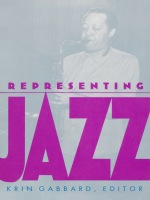 Representing Jazz
Krin Gabbard
Duke University Press, 1995 Traditional jazz studies have tended to see jazz in purely musical terms, as a series of changes in rhythm, tonality, and harmony, or as a parade of great players. But jazz has also entered the cultural mix through its significant impact on novelists, filmmakers, dancers, painters, biographers, and photographers. Representing Jazz explores the "other" history of jazz created by these artists, a history that tells us as much about the meaning of the music as do the many books that narrate the lives of musicians or describe their recordings. Krin Gabbard has gathered essays by distinguished writers from a variety of fields. They provide engaging analyses of films such as Round Midnight, Bird, Mo’ Better Blues, Cabin in the Sky, and Jammin’ the Blues; the writings of Eudora Welty and Dorothy Baker; the careers of the great lindy hoppers of the 1930s and 1940s; Mura Dehn’s extraordinary documentary on jazz dance; the jazz photography of William Claxton; painters of the New York School; the traditions of jazz autobiography; and the art of "vocalese." The contributors to this volume assess the influence of extramusical sources on our knowledge of jazz and suggest that the living contexts of the music must be considered if a more sophisticated jazz scholarship is ever to evolve. Transcending the familiar patterns of jazz history and criticism, Representing Jazz looks at how the music actually has been heard and felt at different levels of American culture. With its companion anthology, Jazz Among the Discourses, this volume will enrich and transform the literature of jazz studies. Its provocative essays will interest both aficionados and potential jazz fans. Contributors. Karen Backstein, Leland H. Chambers, Robert P. Crease, Krin Gabbard, Frederick Garber, Barry K. Grant, Mona Hadler, Christopher Harlos, Michael Jarrett, Adam Knee, Arthur Knight, James Naremore
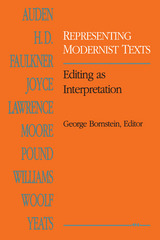 Representing Modernist Texts: Editing as Interpretation
George Bornstein, Editor
University of Michigan Press, 1991 Representing Modernist Texts seeks to expose, and then to bridge, the gap between contemporary textual scholarship and the critical and theoretical study of modernist texts. Modernist critics and scholars have for too long consigned textual problems to work from earlier periods and largely ignored them in creating successive waves of avantgarde critical theory designed first to champion, and more recently to challenge, modernist literature itself. And yet, as the controversy around Hans Walter Gabler’s edition of Ulysses has made clear, twentieth-century texts are deeply problematic at the physical as well as the interpretive level.
In Representing Modernist Texts, thirteen internationally known scholars provide major explorations of the topic in the work of particular writers. The issues they raise include the construction of a writer’s canon and the effect of newly available “uncanonical” manuscript materials on existing works and orderings; the replacement of the older idea of a fixed, stable text by a more contemporary notion of the text as process; and the interrogation by advanced textual theory of many of the same notions of “author,” “intention,” and “stability of the text” questioned by advanced literary theory.
 Representing Place: Landscape Painting And Maps
Edward S. Casey
University of Minnesota Press, 2002 You are here, a map declares, but of course you are not, any more than you truly occupy the vantage point into which a landscape painting puts you. How maps and paintings figure and reconfigure space—as well as our place in it—is the subject of Edward S. Casey’s ambitious study, an exploration of how we portray the world and its many places. Casey’s discussion ranges widely from Northern Sung landscape painting to nineteenth-century American and British landscape painting and photography, from prehistoric petroglyphs and medieval portolan charts to seventeenth-century Dutch cartography and land survey maps of the American frontier. From these culturally and historically diverse forays a theory of representation emerges. Casey proposes that the representation of place in visual works be judged in terms not of resemblance, but of reconnecting with an earth and world that are not the mere content of mind or language—a reconnection that calls for the embodiment and implacement of the human subject. Representing Place is the third volume in Casey’s influential epic project of reinterpreting evolving conceptions of space in world thought. He combines history with philosophy, and cartography with art, to create a new understanding of how representation requires and thrives on space, ultimately renewing our appreciation of the power of place as it is set forth in paintings and maps.
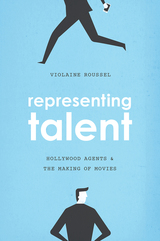 Representing Talent: Hollywood Agents and the Making of Movies
Violaine Roussel
University of Chicago Press, 2017 Audiences love the glitz and glamour of Hollywood, but beyond the red carpet and behind the velvet curtain exists a legion of individuals who make showbiz work: agents. Whether literary, talent, or indie film, agents are behind the scenes brokering power, handling mediation, and doing the deal-making that keeps Hollywood spinning. In Representing Talent, Violaine Roussel explores the little-known but decisive work of agents, turning the spotlight on how they help produce popular culture.
The book takes readers behind the scenes to observe the day-to-day activities of agents, revealing their influence on artistic careers and the prospects of Hollywood’s forthcoming projects. Agents are crucial to understanding how creative and economic power are intertwined in Hollywood today. They play a key role in the process by which artistic worth and economic value are evaluated and attributed to people and projects. Roussel’s fieldwork examines what “having relationships” really means for agents, and how they perform the relationship work that’s at the heart of their professional existence and success. Representing Talent helps us to understand the players behind the definition of entertainment itself, as well as behind its current transformations.
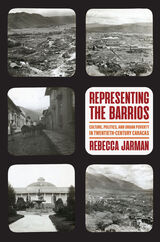 Representing the Barrios: Culture, Politics, and Urban Poverty in Twentieth-Century Caracas
Rebecca Jarman
University of Pittsburgh Press, 2023 Against a backdrop of rapid urbanization and the growth of a global economy powered by carbon, Rebecca Jarman argues that in Venezuela, urban poverty has become one of the most important resources in national culture and statecraft. Attracting the attentions of writers, artists, filmmakers, and musicians from within and beyond the limits of Caracas, the barrios are fetishized in the cultural domain as sites of rampant sex, crime, revolution, disease, and violence. The appeal of the urban poor in entertainment is replicated in the policies of autocratic leaders who, operating within an extractivist matrix that prizes the acquisition of land and capital, have sought to expand their reach into these densely populated territories. Sometimes yielding to commodification, the barrios also have resisted exploitation by exceeding the terms of their representation in hegemonic culture and politics. Whether troubling the narratives that profit from poverty or undermining class-based stereotypes with experimental aesthetics, the barrio as a shifting set of coordinates consistently evades appropriations of disenfranchisement. Mapping the recurrent tensions, anxieties, conflicts, aspirations, and blind spots that characterize depictions of the barrios, Rebecca Jarman elaborates a dynamic cultural analysis of the history of poverty in the Venezuelan capital.
 Representing the French Revolution: Literature, Historiography, and Art
Edited by James A. W. Heffernan
Brandeis University Press, 1992 Why is the anniversary of the French Revolution celebrated on July 14, the day the Bastille was stormed, rather than on August 26, the day the Declaration of the Rights of Man was signed? Why don’t the French do as the Americans, who see their revolution epitomized by the signing of the Declaration of Independence? “There is surely something to be learned from contemplating the difference between these two ways of representing a revolution,” writes James Heffernan. In this volume, he and 13 other distinguished scholars consider representations of the French Revolution in literature, historical narratives, and art as central to understanding it. Challenging the idea that history is a body of fact separable from fictions wrought by literature and the visual arts, they show that study of a major historical event inevitably leads to study of representation.
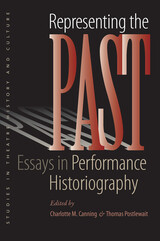 Representing the Past: Essays in Performance Historiography
Charlotte M. Canning
University of Iowa Press, 2010 How do historians represent the past? How do theatre historians represent performance events? The fifteen challenging essays in Representing the Past: Essays in Performance Historiography focus on the fundamental epistemological conditions and procedures that serve as the foundational ideas that guide all historians in their endeavors. Unified by their investigations into how best to understand and then represent the past, this diverse group of scholars in the field of theatre history and performance studies offers insights into the abiding issues that all historians face in the task of representing human events and actions. Five primary ideas provide the topics as well as the intellectual parameters for this book: archive, time, space, identity, and narrative. Taking these as the conceptual framework for historical research and analysis, the essayists cover an expansive range of case studies and problems in the historical study of performance from the Americas to Africa and from Europe to India and China. Considering not only how historians think about these concepts in their research and writing but more pointedly—and historiographically—how they think with them, the essayists demonstrate the power and centrality of each of these five ideas in historical scholarship from initial research to the writing of essays and books. Performance history has a diversity of identities, locations, sources, and narratives. This compelling engagement with the concepts essential to historical understanding is a valuable contribution to the historiography of performance—for students, teachers, and the future of the discipline itself. Expanding upon its classic predecessor, Interpreting the Theatrical Past: Essays in the Historiography of Performance, this exciting new collection illustrates the contemporary richness of historical thinking and writing in the field of performance history.
 Representing the Race: The Creation of the Civil Rights Lawyer
Kenneth W. Mack
Harvard University Press, 2012 “A wonderful excavation of the first era of civil rights lawyering.”—Randall L. Kennedy, author of The Persistence of the Color Line
“Ken Mack brings to this monumental work not only a profound understanding of law, biography, history and racial relations but also an engaging narrative style that brings each of his subjects dynamically alive.”—Doris Kearns Goodwin, author of Team of Rivals
Representing the Race tells the story of an enduring paradox of American race relations through the prism of a collective biography of African American lawyers who worked in the era of segregation. Practicing the law and seeking justice for diverse clients, they confronted a tension between their racial identity as black men and women and their professional identity as lawyers. Both blacks and whites demanded that these attorneys stand apart from their racial community as members of the legal fraternity. Yet, at the same time, they were expected to be “authentic”—that is, in sympathy with the black masses. This conundrum, as Kenneth W. Mack shows, continues to reverberate through American politics today.
Mack reorients what we thought we knew about famous figures such as Thurgood Marshall, who rose to prominence by convincing local blacks and prominent whites that he was—as nearly as possible—one of them. But he also introduces a little-known cast of characters to the American racial narrative. These include Loren Miller, the biracial Los Angeles lawyer who, after learning in college that he was black, became a Marxist critic of his fellow black attorneys and ultimately a leading civil rights advocate; and Pauli Murray, a black woman who seemed neither black nor white, neither man nor woman, who helped invent sex discrimination as a category of law. The stories of these lawyers pose the unsettling question: what, ultimately, does it mean to “represent” a minority group in the give-and-take of American law and politics?
Representing the Troubles in Irish Short Fiction
Michael L. Storey
Catholic University of America Press, 2004 Representing the Troubles in Irish Short Fiction offers a comprehensive examination of Irish short stories written over the last eighty years that have treated the Troubles, Ireland's intractable conflict that arose out of its relationship to England.
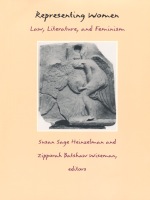 Representing Women: Law, Literature, and Feminism
Susan Sage Heinzelman and Zipporah Batshaw Wiseman, eds.
Duke University Press, 1994 This anthology explores the provocative intersection between feminist, literary, and legal theories. Written by feminist thinkers from law and literature, discourses that each produce culturally powerful representations of women, these essays contest the boundaries that usually separate these disciplines and thereby alter the possibilities of those representations that have traditionally disempowered women. Beginning with an exploration of the ways in which women are represented—how they either tell or have their stories told in literature, in the law, in a courtroom—this collection demonstrates the interrelatedness of the legal and the literary. Whether considering the status of medieval women readers or assessing the effectiveness and extent of contemporary rape law reform, the essays show that power first comes with telling one’s own story, and that the degree and effect of that power are determined by the cultural significance of the forum in which the story is presented. But telling the story is not enough. One must also be aware of how the story is contained within traditional constructs or boundaries and is thus limited in its effects, as Carol Sanger’s essay on mothers and legal/sexual identity makes clear. One must also recognize how a story might perpetuate an ideological agenda that is not in the best interests of the storyteller, as Elizabeth Butler Cullingford shows in her reading of Yeats’s "Leda and the Swan" and one must know the historical context of a story and of its telling, as Anne B. Goldstein’s essay on lesbian narratives discloses. Breaking down the boundaries between law and literature, this anthology makes evident the ways in which the effect of women’s stories has been constrained and expands the range of possibilities for those who represent women, tell women’s stories, or present women’s issues. Representing Women makes the retelling of old stories about women compelling and the telling of new ones both necessary and possible. Contributors. Kathryn Abrams, Linda Brodkey, Rita Copeland, Elizabeth Butler Cullingford, Margaret Anne Doody, Susan B. Estrich, Michelle Fine, Anne B. Goldstein, Angela P. Harris, Susan Sage Heinzelman, Christine L. Krueger, Martha Minow, Carol Sanger, Judy Scales-Trent
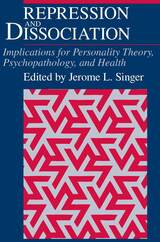 Repression and Dissociation: Implications for Personality Theory, Psychopathology and Health
Jerome L. Singer
University of Chicago Press, 1990 This book features contributions from twenty six leading experts that survey the theoretical, historical, methodological, empirical, and clinical aspects of repression and the repressive personality style, from both psychoanalytic and cognitive psychological perspectives.
"Rarely does a volume present contributions on a controversial topic from such distinguished clinicians and experimentalists . . . . There is something of interest in this volume for almost anyone involved in experimental cognitive psychology and psychiatry."—Carroll E. Izard, Contemporary Psychology
"The concept of repression is the cornerstone of psychoanalytic theory. . . . This is a delightful book, unusually well-written. . . . Recommended."—Choice
"Readable, thorough, wide ranging and consistently interesting. . . . A testament to the continuing power of psychodynamic ideas when faced with individual psychopathology."—Sue Llewelyn, Psychologist
"Singer has brought together some of the best empirical research in the areas of unconscious mental activity and repression—that is at once interdisciplinary and scholarly."—Howard D. Lerner, International Review of Psycho-analysis
"A rich reference, replete with summaries and citations, covering a variety of topics related to the psychology of repression and dissociation. . . . A thoughtful, detailed and eclectic discussion of the scientific and theoretical basis of repression and dissociation."—Steven Lazrove, M.D., American Journal of Psychiatry
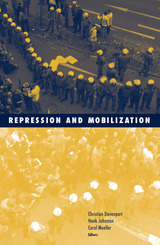 Repression And Mobilization
Christian Davenport
University of Minnesota Press, 2005 Brings together leading scholars from political science and sociology
Recent events—from the collapse of Leninist regimes in Eastern Europe to the democratization of South Asian and South American states—have profoundly changed our ways of understanding and studying contentious politics, particularly the relationship between state repression and political mobilization. With case studies that range from Germany to the Philippines, the United States to Japan, Guatemala to China, the authors take up topics as varied as the dynamic interactions between protesters and policing agents, distinctions between “hard” and “soft” repression, the impact of media on our understanding of political contention, the timing and shape of protest and resistance cycles, and how measurements of social and geographic control influence states’s responses to insurgencies. Together these essays synthesize what we know about repression and mobilization and provide thoughtful insight for the future. Contributors: Patrick Ball, Science and Human Rights Program of the American Association for the Advancement of Science; Vince Boudreau, City College of New York; Myra Marx Ferree, U of Wisconsin; Ronald A. Francisco, U of Kansas; Ruud Koopmans, Free U Amsterdam; Mark Lichbach, U of Maryland; John D. McCarthy, Pennsylvania State U; Clark McPhail, U of Illinois, Urbana-Champaign; Patricia Steinhoff, U of Hawaii; Charles Tilly, Columbia U; Gilda Zwerman, SUNY, Old Westbury.
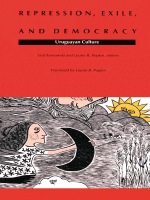 Repression, Exile, and Democracy: Uruguayan Culture
Saul Sosnowski and Louise B. Popkin, eds.
Duke University Press, 1992 Repression, Exile, and Democracy, translated from the Spanish, is the first work to examine the impact of dictatorship on Uruguyan culture. Some of Uruguay's best-known poets, writers of fiction, playwrights, literary critics and social scientists participate in this multidisciplinary study, analyzing how varying cultural expressions have been affected by conditions of censorship, exile and "insilio" (internal exile), torture, and death. The first section provides a context for the volume, with its analyses of the historical, political, and social aspects of the Uruguayan experience. The following chapters explore various aspects of cultural production, including personal experiences of exile and imprisonment, popular music, censorship, literary criticism, return from exile, and the role that culture plays in redemocratization. This book's appeal extends well beyond the study of Uruguay to scholars and students of the history and culture of other Latin American nations, as well as to fields of comparative literature and politics in general. Contributors. Hugo Achugar, Alvarro Barros-Lémez, Lisa Block de Behar, Amanda Berenguer, Hiber Conteris, José Pedro Díaz, Eduardo Galeano, Edy Kaufman, Leo Masliah, Carina Perelli, Teresa Porzecanski, Juan Rial, Mauricio Rosencof, Jorge Ruffinelli, Saúl Sosonowski, Martin Weinstein, Ruben Yáñez
The Repression of Psychoanalysis: Otto Fenichel and the Political Freudians
Russell Jacoby
University of Chicago Press, 1986 By examining the private correspondence of a circle of German psychoanalyst emigrés that included Otto Fenichel, Annie Reich, and Edith Jacobson, Russell Jacoby recaptures the radical zeal of classical analysis and the efforts of the Fenichel group to preserve psychoanalysis as a social and political theory, open to a broad range of intellectuals regardless of their medical background. In tracing this effort, he illuminates the repression by psychoanalysis of its own radical past and its transformation into a narrow medical technique. This book is of critical interest to the general reader as well as to psychoanalytic historians, theorists, and therapists.
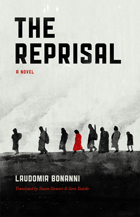 The Reprisal: A Novel
Laudomia Bonanni
University of Chicago Press, 2013 In the bitterly cold winter of 1943, the Italian countryside is torn apart by violence as partisans wage a guerilla war against the occupying German army and their local fascist allies. In the midst of this conflict, a ragtag group of fascist supporters captures a woman in the late stages of pregnancy. Suspecting her of being in league with the partisans, they hastily put her on “trial” by improvising a war tribunal one night in the choir stalls of the abandoned monastery that serves as their hide-out. This sham court convicts the woman and sentences her to die—but not until her child has been born. When a young seminarian visits the monastery and tries to dissuade the fascist band from executing their sentence, the absurd tragedy of the woman’s fate is cast in stark relief. The child’s birth approaches, an unnerving anticipation unfolds, and tension mounts ominously among the characters and within their individual psyches.
Based on a number of incidents that took place in Abruzzo during the war, Laudomia Bonanni’s compact and tragic novel explores the overwhelming conflicts between ideology and community, justice and vengeance. The story is embedded in the cruel reality of Italian fascism, but its themes of revenge, sacrifice, and violence emerge as universal, delivered in prose that is at once lyrical and brutal.
In her native Italy, Bonanni, a writer of journalism and critical prose as well as fiction, is hailed as one of the strongest proponents of post-war realism, and this is the first of her novels to be made available to Anglophone readers. Translators Susan Stewart and Sara Teardo render Bonanni’s singular style—both sparse and emotive, frank and poetic—into readable, evocative English.
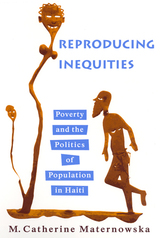 Reproducing Inequities: Poverty and the Politics of Population in Haiti
Maternowska, M. Catherine
Rutgers University Press, 2006 Residents of Haiti-one of the poorest and most unstable countries in the world-face a grim reality of starvation, violence, lack of economic opportunity, and minimal health care. For years, aid organizations have sought to alleviate the problems by creating health and family planning clinics, including one modern (and, by local standards, luxurious) center in the heart of Cit Soleil. During its height of service in the 1980s and 1990s, the clinic boasted nineteen staff members, an array of modern contraceptives, an accessible location, and convenient hours-but very few clients. Why did this initiative fail so spectacularly despite surveys finding that residents would like to have fewer children? Why don't poor women heed the message of family planning, when smaller families seem to be in their best interest? In Reproducing Inequities, M. Catherine Maternowska argues that we too easily overlook the political dynamics that shape choices about family planning. Through a detailed study of the attempt to provide modern contraception in the community of Cit Soleil, Maternowska demonstrates the complex interplay between local and global politics that so often thwarts well-intended policy initiatives. Medical anthropologists, she argues, have an important role to play in developing new action plans for better policy implementation. Ethnographic studies in desperate, dangerous locations provide essential data that can point the way to solutions for the dilemmas of contraception in poor communities worldwide.
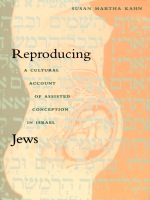 Reproducing Jews: A Cultural Account of Assisted Conception in Israel
Susan Martha Kahn
Duke University Press, 2000 There are more fertility clinics per capita in Israel than in any other country in the world and Israel has the world's highest per capita rate of in-vitro fertilization procedures. Fertility treatments are fully subsidized by Israeli national health insurance and are available to all Israelis, regardless of religion or marital status. These phenomena are not the result of unusually high rates of infertility in Israel but reflect the centrality of reproduction in Judaism and Jewish culture. In this ethnographic study of the new reproductive technologies in Israel, Susan Martha Kahn explores the cultural meanings and contemporary rabbinic responses to artificial insemination, in-vitro fertilization, egg donation, and surrogacy. Kahn draws on fieldwork with unmarried Israeli women who are using state-subsidized artificial insemination to get pregnant and on participant-observation in Israeli fertility clinics. Through close readings of traditional Jewish texts and careful analysis of Israeli public discourse, she explains how the Israeli embrace of new reproductive technologies has made Jewish beliefs about kinship startlingly literal. Kahn also reveals how a wide range of contemporary Israelis are using new reproductive technologies to realize their reproductive futures, from ultraorthodox infertile married couples to secular unmarried women. As the first scholarly account of assisted conception in Israel, this multisited ethnography will contribute to current anthropological debates on kinship studies. It will also interest those involved with Jewish studies.
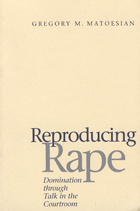 Reproducing Rape: Domination through Talk in the Courtroom
Gregory M. Matoesian
University of Chicago Press, 1993 This book offers new insight into one of the most disturbing social problems of modern societies: rape. Using tape recordings of actual trials, Gregory M. Matoesian looks at the social construction of rape trials and at how a woman's experience of violation can be transformed in the courtroom into an act of routine, consensual sex.
Matoesian examines the language of the courtroom, focusing on how defense lawyers interpret and classify rape in a way that makes the victim's experience appear as a normal sexual encounter. He analyzes the language that defense attorneys use in cross-examination to argue that courtroom talk can shape the victim's testimony to fit male standards of legitimate sexual practice. On this view, cross-examination is an adversarial war of words through which lawyers manipulate reality and perpetuate the patriarchal domination of women.
Reproducing Rape will interest students and professionals in law, criminology, sociology, feminist theory, linguistics, and anthropology.
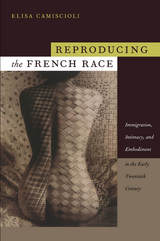 Reproducing the French Race: Immigration, Intimacy, and Embodiment in the Early Twentieth Century
Elisa Camiscioli
Duke University Press, 2009 In Reproducing the French Race, Elisa Camiscioli argues that immigration was a defining feature of early-twentieth-century France, and she examines the political, cultural, and social issues implicated in public debates about immigration and national identity at the time. Camiscioli demonstrates that mass immigration provided politicians, jurists, industrialists, racial theorists, feminists, and others with ample opportunity to explore questions of French racial belonging, France’s relationship to the colonial empire and the rest of Europe, and the connections between race and national anxieties regarding depopulation and degeneration. She also shows that discussions of the nation and its citizenry consistently returned to the body: its color and gender, its expenditure of labor power, its reproductive capacity, and its experience of desire. Of paramount importance was the question of which kinds of bodies could assimilate into the “French race.” By focusing on telling aspects of the immigration debate, Camiscioli reveals how racial hierarchies were constructed, how gender figured in their creation, and how only white Europeans were cast as assimilable. Delving into pronatalist politics, she describes how potential immigrants were ranked according to their imagined capacity to adapt to the workplace and family life in France. She traces the links between racialized categories and concerns about industrial skills and output, and she examines medico-hygienic texts on interracial sex, connecting those to the crusade against prostitution and the related campaign to abolish “white slavery,” the alleged entrapment of (white) women for sale into prostitution abroad. Camiscioli also explores the debate surrounding the 1927 law that first made it possible for French women who married foreigners to keep their French nationality. She concludes by linking the Third Republic’s impulse to create racial hierarchies to the emergence of the Vichy regime.
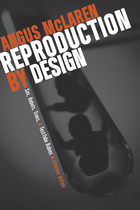 Reproduction by Design: Sex, Robots, Trees, and Test-Tube Babies in Interwar Britain
Angus McLaren
University of Chicago Press, 2012 Modernity in interwar Europe frequently took the form of a preoccupation with mechanizing the natural; fears and fantasies revolved around the notion that the boundaries between people and machines were collapsing. Reproduction in particular became a battleground for those debating the merits of the modern world. That debate continues today, and to understand the history of our anxieties about modernity, we can have no better guide than Angus McLaren. In Reproduction by Design, McLaren draws on novels, plays, science fiction, and films of the 1920s and '30s, as well as the work of biologists, psychiatrists, and sexologists, to reveal surprisingly early debates on many of the same questions that shape the conversation today: homosexuality, recreational sex, contraception, abortion, euthanasia, sex change operations, and in vitro fertilization. Here, McLaren brings together the experience and perception of modernity with sexuality, technology, and ecological concerns into a cogent discussion of science’s place in reproduction in British and American cultural history.
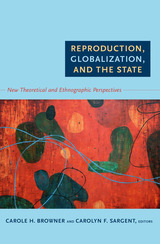 Reproduction, Globalization, and the State: New Theoretical and Ethnographic Perspectives
Carole H. Browner and Carolyn F. Sargent, eds.
Duke University Press, 2011 Reproduction, Globalization, and the State conceptualizes and puts into practice a global anthropology of reproduction and reproductive health. Leading anthropologists offer new perspectives on how transnational migration and global flows of communications, commodities, and biotechnologies affect the reproductive lives of women and men in diverse societies throughout the world. Based on research in Africa, the Americas, Asia, and Western Europe, their fascinating ethnographies provide insight into reproduction and reproductive health broadly conceived to encompass population control, HIV/AIDS, assisted reproductive technologies, paternity tests, sex work, and humanitarian assistance. The contributors address the methodological challenges of research on globalization, including ways of combining fine-grained ethnography with analyses of large-scale political, economic, and ideological forces. Their essays reveal complex interactions among global and state population policies and politics; public health, human rights, and feminist movements; diverse medical systems; various religious practices, doctrines, and institutions; and intimate relationships and individual aspirations. Contributors. Aditya Bharadwaj, Caroline H. Bledsoe, Carole H. Browner, Junjie Chen, Aimee R. Eden, Susan L. Erikson, Didier Fassin, Claudia Lee Williams Fonseca, Ellen Gruenbaum, Matthew Gutmann, Marcia C. Inhorn, Mark B. Padilla, Rayna Rapp, Lisa Ann Richey, Carolyn Sargent, Papa Sow, Cecilia Van Hollen, Linda Whiteford
 Reproductions of Banality: Fascism, Literature, and French Intellectual Life
Alice Yaeger KaplanForeword by Russell Berman
University of Minnesota Press, 1986 Reproductions of Banality was first published in 1986. Minnesota Archive Editions uses digital technology to make long-unavailable books once again accessible, and are published unaltered from the original University of Minnesota Press editions. An established fascist state has never existed in France, and after World War II there was a tendency to blame the Nazi Occupation for the presence of fascists within the country. Yet the memory of fascism within their ranks still haunts French intellectuals, and questions about a French version of fascist ideology have returned to the political forefront again and again in the years since the war. In Reproductions of Banality, Alice Yaegar Kaplan investigates the development of fascist ideology as it was manifested in the culture of prewar and Occupied France. Precisely because it existed only in a "gathering" or formative stage, and never achieved the power that brings with it a bureaucratic state apparatus, French fascism never lost its utopian, communal elements, or its consequent aesthetic appeal. Kaplan weighs this fascist aesthetic and its puzzling power of attraction by looking closely at its material remains: the narratives, slogans, newspapers, and film criticism produced by a group of writers who worked in Paris in the 1930s and early 1940s — their "most real moment." These writers include Pierre Drieu la Rochelle, Louis-Ferdinand Celine, Lucien Rebatat, Robert Brasillach, and Maurice Bardeche, as well as two precursors of French fascism, Georges Sorel and the Italian futurist F.T. Marinetti, who made of the airplane an industrial carrier of sexual fantasies and a prime mover in the transit from futurism to fascism. Kaplan's work is grounded in the major Marxist and psychoanalytic theories of fascism and in concepts of banality and mechanical reproduction that draw upon Walter Benjamin. Emphasizing the role played by the new technologies of sight and sound, she is able to suggest the nature of the long-repressed cultural and political climate that produced French fascism, and to show—by implication — that the mass marketing of ideology in democratic states bears a family resemblance to the fascist mode of an earlier time.
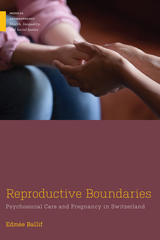 Reproductive Boundaries: Psychosocial Care and Pregnancy in Switzerland
Edmée Ballif
Rutgers University Press, 2026 Reproductive Boundaries examines the shifting boundaries of prenatal care in Switzerland, focusing on the Pregnancy Support Center's innovative psychosocial model. By redefining the territory of care, the Center extends its reach beyond the medical domain, exemplifying the reproductivization of life, the increasing organization of various life aspects through a reproductive lens. The book explores how this approach challenges traditional borders between medical and psychosocial care, offering an alternative to Switzerland's heavily medicalized reproductive care. Through ethnographic insights into reproductive talk, it reveals how psychosocial advisors shift the boundaries of reproductive care, balancing support with broader state goals of reproductive governance. Set against Switzerland's history of stratified reproductive policies, the study critically examines how psychosocial care reshapes the landscape of pregnancy, raising questions about surveillance and evolving gender roles. This thought-provoking work invites readers to reconsider the limits and possibilities of care in a fragmented society.
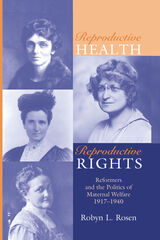 REPRODUCTIVE HEALTH, REPRODUCTIVE RIGHTS: REFORMERS & THE POLITICS OF MATERNAL WELFARE, 1917–1940
Robyn L. Rosen
Ohio State University Press, 2003 In the early twentieth century, shifting attitudes and new public health standards brought an unprecedented interest in and effort to regulate issues affecting reproduction and maternity. Maternal and infant health, nutrition, and medical care came under scrutiny, as did the issue of birth control. While the prior gained public support, the latter remained controversial. Though some reformers saw birth control as an important part of maternal welfare, others sought to separate it from more popular reforms. The careers of the four prominent but usually neglected reformers (Elizabeth Lowell Putnam, Ethel Sturges Dummer, Mary Ware Dennett, and Blanche Ames) examined in this book embody the struggle to define and resolve these tensions. The study of these reformers offers a new perspective on more recognized leaders in the arena of reproductive health and rights, especially the U.S. Children's Bureau and Margaret Sanger. Putnam's elitism contextualizes the class politics of the Bureau, underscoring its sensitivity to the vulnerable and its innovative approach to public health. Dummer reminds us of roads not taken by policy makers in the Bureau, accentuating the differences between a child-centered and a woman-centered agenda. Dennett highlights the obstacles to women reformers in the formal political sphere, while Ames's penchant toward maternalism and compromise also led to difficulties. Together, they illustrate the complexities of formulating an effective approach to securing reproductive rights and health.
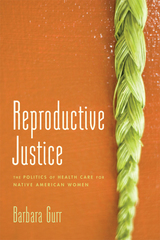 Reproductive Justice: The Politics of Health Care for Native American Women
Gurr, Barbara
Rutgers University Press, 2015 In Reproductive Justice, sociologist Barbara Gurr provides the first analysis of Native American women’s reproductive healthcare and offers a sustained consideration of the movement for reproductive justice in the United States.
The book examines the reproductive healthcare experiences on Pine Ridge Reservation, home of the Oglala Lakota Nation in South Dakota—where Gurr herself lived for more than a year. Gurr paints an insightful portrait of the Indian Health Service (IHS)—the federal agency tasked with providing culturally appropriate, adequate healthcare to Native Americans—shedding much-needed light on Native American women’s efforts to obtain prenatal care, access to contraception, abortion services, and access to care after sexual assault. Reproductive Justice goes beyond this local story to look more broadly at how race, gender, sex, sexuality, class, and nation inform the ways in which the government understands reproductive healthcare and organizes the delivery of this care. It reveals why the basic experience of reproductive healthcare for most Americans is so different—and better—than for Native American women in general, and women in reservation communities particularly. Finally, Gurr outlines the strengths that these communities can bring to the creation of their own reproductive justice, and considers the role of IHS in fostering these strengths as it moves forward in partnership with Native nations.
Reproductive Justice offers a respectful and informed analysis of the stories Native American women have to tell about their bodies, their lives, and their communities.
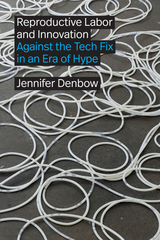 Reproductive Labor and Innovation: Against the Tech Fix in an Era of Hype
Jennifer Denbow
Duke University Press, 2024 In Reproductive Labor and Innovation, Jennifer Denbow examines how the push toward technoscientific innovation in contemporary American life often comes at the expense of the care work and reproductive labor that is necessary for society to function. Noting that the gutting of social welfare programs has shifted the burden of solving problems to individuals, Denbow argues that the aggrandizement of innovation and the degradation of reproductive labor are intertwined facets of neoliberalism. She shows that the construction of innovation as a panacea to social ills justifies the accumulation of wealth for corporate innovators and the impoverishment of those feminized and racialized people who do the bulk of reproductive labor. Moreover, even innovative technology aimed at reproduction—such as digital care work platforms and noninvasive prenatal testing—obscure structural injustices and further devalue reproductive labor. By drawing connections between innovation discourse, the rise of neoliberalism, financialized capitalism, and the social and political degradation of reproductive labor, Denbow illustrates what needs to be done to destabilize the overvaluation of innovation and to offer collective support for reproduction.
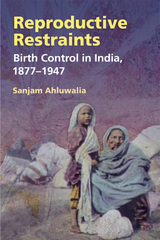 Reproductive Restraints: Birth Control in India, 1877-1947
Sanjam Ahluwalia
University of Illinois Press, 2007 Reproductive Restraints traces the history of contraception use and population management in colonial India, while illuminating its connection to contemporary debates in India and birth control movements in Great Britain and the United States. Sanjam Ahluwalia draws attention to the interactive and relational history of Indian birth control by including western activists such as Margaret Sanger and Marie Stopes alongside important Indian campaigners. In revealing the elitist politics of middle-class feminists, Indian nationalists, western activists, colonial authorities and the medical establishment, Ahluwalia finds that they all sought to rationalize procreation and regulate women while invoking competing notions of freedom, femininity, and family. Ahluwalia’s remarkable interviews with practicing midwives in rural northern India fills a gaping void in the documentary history of birth control and shows that the movement has had little appeal to non-elite groups in India. Finding that Jaunpuri women’s reproductive decisions are bound to their emotional, cultural, and economic reliance on family and community, Ahluwalia presents the limitations of universal liberal feminist categories, which often do not consider differences among localized subjects. She argues that elitist birth control efforts failed to account for Indian women’s values and needs and have worked to restrict reproductive rights rather than liberate subaltern Indian women since colonial times.
Reproductive Rights in a Global Context: South Africa, Uganda, Peru, Denmark, United States, Vietnam, Jordan
Lara M. Knudsen
Vanderbilt University Press, 2006 A Choice Outstanding Academic Book of 2006
Traveling alone when she was between 17 and 22, with no institutional affiliation and no financial assistance, the author visited five developing countries and two developed ones on five continents. Her goal was to extend her own experience in an abortion clinic in Portland, Oregon. Lara Knudsen interviewed over 90 women's rights activists, health professionals, NGO workers, and government officials, gaining a sense of both official policies and the actual delivery of services in local clinics. The book places the experiences of women within the global context of how international population control agendas have influenced women's reproductive rights in the past, and how the changing international discourse on reproductive health continues to influence those rights today.
Reproductive Success: Studies of Individual Variation in Contrasting Breeding Systems
Edited by T. H. Clutton-Brock
University of Chicago Press, 1988 "This book is well worth buying for its detailed summaries of the 25 studies, many of which are classic long-term projects, and for its insights into the factors determining reproductive success."—William J. Sutherland, TREE
"A must read for anyone interested in evolution, mating/social systems, and population ecology."—John L. Koprowski, IJournal of Insect Behavior
Reproductive Technologies as Global Form: Ethnographies of Knowledge, Practices, and Transnational Encounters
Edited by Michi Knecht, Maren Klotz, and Stefan Beck
Campus Verlag, 2012
In the thirty years since the first “test-tube baby,” in-vitro fertilization and other methods of reproductive assistance have become a common aspect of family life and medicine in developed nations—and, increasingly, throughout the world. This collection brings together ethnographic studies of how these reproductive technologies are deployed across a wide variety of nations and cultures, taking special account of how they are linked to aspirations towards modernity—and how they contribute to an ongoing reconfiguration of the boundaries of knowledge and human agency. The resulting volume offers both a current snapshot of the cultural state of reproductive technologies and a plethora of provocative questions for the future.
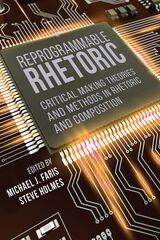 Reprogrammable Rhetoric: Critical Making Theories and Methods in Rhetoric and Composition
Michael J. Faris
Utah State University Press, 2022 Reprogrammable Rhetoric offers new inroads for rhetoric and composition scholars’ past and present engagements with critical making. Moving beyond arguments of inclusion and justifications for scholarly legitimacy and past historicizations of the “material turn” in the field, this volume explores what these practices look like with both a theoretical and hands-on “how-to” approach. Chapters function not only as critical illustrations or arguments for the use of reprogrammable circuits but also as pedagogical instructions that enable readers to easily use or modify these compositions for their own ends.
This collection offers nuanced theoretical perspectives on material and cultural rhetorics alongside practical tutorials for students, researchers, and teachers to explore critical making across traditional areas such as wearable sensors, Arduinos, Twitter bots, multimodal pedagogy, Raspberry Pis, and paper circuitry, as well as underexplored areas like play, gaming, text mining, bots, and electronic monuments.
Designed to be taught in upper division undergraduate and graduate classrooms, these tutorials will benefit non-expert and expert critical makers alike. All contributed codes and scripts are also available on Utah State University Press’s companion website to encourage downloading, cloning, and repurposing.
Contributors: Aaron Beveridge, Kendall Gerdes, Kellie Gray, Matthew Halm, Steven Hammer, Cana Uluak Itchuaqiyaq, John Jones, M.Bawar Khan, Bree McGregor, Sean Morey, Ryan Omizo, Andrew Pilsch, David Rieder, David Sheridan, Wendi Sierra, Nicholas Van Horn
The Reptiles and Amphibians of Alabama
Robert H. Mount
University of Alabama Press, 1980 The only comprehensive book about the state's 182 species and subspecies of snakes, lizards, turtles, frogs, and salamanders
Generously illustrated, it contains photographs and range maps for each species, showing the specific locality from which each specimen on record was collected. The text includes keys, detailed descriptions, accounts of habitats and life histories, remarks about variations and ecological disturbances, as well as general information on such topics as collecting and care in captivity. The volume is an essential guide for herpetologists of all ages.
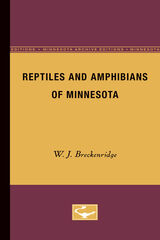 Reptiles and Amphibians of Minnesota
W.J. Breckenridge
University of Minnesota Press, 1944
Reptiles and Amphibians of Minnesota was first published in 1944.Both amateur and professional naturalists will find this a useful and authoritative handbook for the study of reptiles and amphibians in Minnesota and the surrounding regions. Dr. Breckenridge was for many years the director of the Minnesota Museum of Natural History and familiar with the needs and interests of those studying the wildlife of the area. In this book he provides a comprehensive yet clearly and simply written text, illustrated with excellent photographs, drawings, and maps.As an introduction to his subject, Dr. Breckenridge tells something of the history of Minnesota herpetology and recounts some of the takes and folklore about snakes, lizards, turtles, frogs, toads, and salamanders. He then describes the distribution of species in Minnesota and outlines methods of field study. He tells how to preserve specimens, how to care for reptiles or amphibians in captivity, and what to do to avoid or treat snake bites.Preceding the detailed descriptions of the species, there is an explanation, especially helpful to the beginner, of the general scientific method of classification and the use of keys. Keys for use in identifying specimens likely to be found in the region are provided.The descriptions themselves include data on the range, habits, habitat, food, and breeding of 45 different species. Most of these species are illustrated with photographs or drawings, and there are a number of drawings that show structural details. Maps show the range of each species booth in Minnesota and on the North American continent. A glossary explains the meaning of terms used in the keys and descriptions.
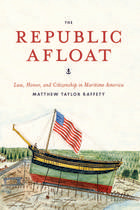 The Republic Afloat: Law, Honor, and Citizenship in Maritime America
Matthew Taylor Raffety
University of Chicago Press, 2013 In the years before the Civil War, many Americans saw the sea as a world apart, an often violent and insular culture governed by its own definitions of honor and ruled by its own authorities. The truth, however, is that legal cases that originated at sea had a tendency to come ashore and force the national government to address questions about personal honor, dignity, the rights of labor, and the meaning and privileges of citizenship, often for the first time. By examining how and why merchant seamen and their officers came into contact with the law, Matthew Taylor Raffety exposes the complex relationship between brutal crimes committed at sea and the development of a legal consciousness within both the judiciary and among seafarers in this period. The Republic Afloat tracks how seamen conceived of themselves as individuals and how they defined their place within the United States. Of interest to historians of labor, law, maritime culture, and national identity in the early republic, Raffety’s work reveals much about the ways that merchant seamen sought to articulate the ideals of freedom and citizenship before the courts of the land—and how they helped to shape the laws of the young republic.
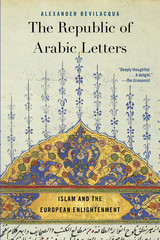 The Republic of Arabic Letters: Islam and the European Enlightenment
Alexander Bevilacqua
Harvard University Press, 2020 Winner of the Herbert Baxter Adams Prize
A Longman–History Today Book Prize Finalist
A Sheik Zayed Book Award Finalist
Winner of the Thomas J. Wilson Memorial Prize
A Times Literary Supplement Book of the Year
“Deeply thoughtful…A delight.”—The Economist
“[A] tour de force…Bevilacqua’s extraordinary book provides the first true glimpse into this story…He, like the tradition he describes, is a rarity.”
—New Republic
In the seventeenth and eighteenth centuries, a pioneering community of Western scholars laid the groundwork for the modern understanding of Islamic civilization. They produced the first accurate translation of the Qur’an, mapped Islamic arts and sciences, and wrote Muslim history using Arabic sources. The Republic of Arabic Letters is the first account of this riveting lost period of cultural exchange, revealing the profound influence of Catholic and Protestant intellectuals on the Enlightenment understanding of Islam.
“A closely researched and engrossing study of…those scholars who, having learned Arabic, used their mastery of that difficult language to interpret the Quran, study the career of Muhammad…and introduce Europeans to the masterpieces of Arabic literature.”
—Robert Irwin, Wall Street Journal
“Fascinating, eloquent, and learned, The Republic of Arabic Letters reveals a world later lost, in which European scholars studied Islam with a sense of affinity and respect…A powerful reminder of the ability of scholarship to transcend cultural divides, and the capacity of human minds to accept differences without denouncing them.”
—Maya Jasanoff
“What makes his study so groundbreaking, and such a joy to read, is the connection he makes between intellectual history and the material history of books.”
—Financial Times
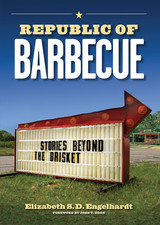 Republic of Barbecue: Stories Beyond the Brisket
By Elizabeth S. D. Engelhardt
University of Texas Press, 2009 Winner, Barbara Sudler Award, Colorado Historical Society, 2010 It's no overstatement to say that the state of Texas is a republic of barbecue. Whether it's brisket, sausage, ribs, or chicken, barbecue feeds friends while they catch up, soothes tensions at political events, fuels community festivals, sustains workers of all classes, celebrates brides and grooms, and even supports churches. Recognizing just how central barbecue is to Texas's cultural life, Elizabeth Engelhardt and a team of eleven graduate students from the University of Texas at Austin set out to discover and describe what barbecue has meant to Texans ever since they first smoked a beef brisket. Republic of Barbecue presents a fascinating, multifaceted portrait of the world of barbecue in Central Texas. The authors look at everything from legendary barbecue joints in places such as Taylor and Lockhart to feedlots, ultra-modern sausage factories, and sustainable forests growing hardwoods for barbecue pits. They talk to pit masters and proprietors, who share the secrets of barbecue in their own words. Like side dishes to the first-person stories, short essays by the authors explore a myriad of barbecue's themes—food history, manliness and meat, technology, nostalgia, civil rights, small-town Texas identity, barbecue's connection to music, favorite drinks such as Big Red, Dr. Pepper, Shiner Bock, and Lone Star beer—to mention only a few. An ode to Texas barbecue in films, a celebration of sports and barbecue, and a pie chart of the desserts that accompany brisket all find homes in the sidebars of the book, while photographic portraits of people and places bring readers face-to-face with the culture of barbecue.
 The Republic of Choice: Law, Authority, and Culture
Lawrence M. Friedman
Harvard University Press, 1990 In this imaginative exploration of modern legal culture, Lawrence Friedman addresses how the contemporary idea of individual rights has altered the legal systems and authority structures of Western societies. Every aspect of law, he argues--from civil rights to personal-injury litigation to divorce law--has been profoundly reshaped, reflecting the power of this concept.
The new individualism is quite different from that of the nineteenth century, which stressed self-control, discipline, and traditional group values. Modern individualism focuses on the individual as the starting and ending point of life and assumes a wide zone of choice. Choice is vital, fundamental: the right to develop oneself, to build up a life uniquely suited to oneself through free, open selection among forms, models, and lifestyles. With striking clarity and force, Friedman demonstrates how the new individualism results from changes in the technological and social framework of society. Loose, unconnected, free-floating, mobile: this is the modern individual, at least in comparison with the immediate past.
Written for the general reader as well as lawyers and legal scholars, The Republic of Choice offers keen and original observations about legal culture and the public consciousness that informs and expresses it.
The Republic of Color: Science, Perception, and the Making of Modern America
Michael Rossi
University of Chicago Press, 2019 The Republic of Color delves deep into the history of color science in the United States to unearth its origins and examine the scope of its influence on the industrial transformation of turn-of-the-century America.
For a nation in the grip of profound economic, cultural, and demographic crises, the standardization of color became a means of social reform—a way of sculpting the American population into one more amenable to the needs of the emerging industrial order. Delineating color was also a way to characterize the vagaries of human nature, and to create ideal structures through which those humans would act in a newly modern American republic. Michael Rossi’s compelling history goes far beyond the culture of the visual to show readers how the control and regulation of color shaped the social contours of modern America—and redefined the way we see the world.
 Republic of Debtors: Bankruptcy in the Age of American Independence
Bruce H. Mann
Harvard University Press, 2009 Debt was an inescapable fact of life in early America. At the beginning of the eighteenth century, its sinfulness was preached by ministers and the right to imprison debtors was unquestioned. By 1800, imprisonment for debt was under attack and insolvency was no longer seen as a moral failure, merely an economic setback. In Republic of Debtors, Bruce H. Mann illuminates this crucial transformation in early American society.
From the wealthy merchant to the backwoods farmer, Mann tells the personal stories of men and women struggling to repay their debts and stay ahead of their creditors. He opens a window onto a society undergoing such fundamental changes as the growth of a commercial economy, the emergence of a consumer marketplace, and a revolution for independence. In addressing debt Americans debated complicated questions of commerce and agriculture, nationalism and federalism, dependence and independence, slavery and freedom. And when numerous prominent men—including the richest man in America and a justice of the Supreme Court—found themselves imprisoned for debt or forced to become fugitives from creditors, their fate altered the political dimensions of debtor relief, leading to the highly controversial Bankruptcy Act of 1800.
Whether a society forgives its debtors is not just a question of law or economics; it goes to the heart of what a society values. In chronicling attitudes toward debt and bankruptcy in early America, Mann explores the very character of American society.
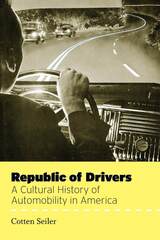 Republic of Drivers: A Cultural History of Automobility in America
Cotten Seiler
University of Chicago Press, 2008 Rising gas prices, sprawl and congestion, global warming, even obesity—driving is a factor in many of the most contentious issues of our time. So how did we get here? How did automobile use become so vital to the identity of Americans? Republic of Drivers looks back at the period between 1895 and 1961—from the founding of the first automobile factory in America to the creation of the Interstate Highway System—to find out how driving evolved into a crucial symbol of freedom and agency.
Cotten Seiler combs through a vast number of historical, social scientific, philosophical, and literary sources to illustrate the importance of driving to modern American conceptions of the self and the social and political order. He finds that as the figure of the driver blurred into the figure of the citizen, automobility became a powerful resource for women, African Americans, and others seeking entry into the public sphere. And yet, he argues, the individualistic but anonymous act of driving has also monopolized our thinking about freedom and democracy, discouraging the crafting of a more sustainable way of life. As our fantasies of the open road turn into fears of a looming energy crisis, Seiler shows us just how we ended up a republic of drivers—and where we might be headed.
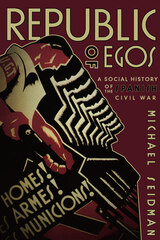 Republic of Egos: A Social History of the Spanish Civil War
Michael Seidman
University of Wisconsin Press, 2002 Most histories of the Spanish Civil War (1936–1939) have examined major leaders or well-established political and social groups to explore class, gender, and ideological struggles. The war in Spain was marked by momentous conflicts between democracy and dictatorship, Communism and fascism, anarchism and authoritarianism, and Catholicism and anticlericalism that still provoke our fascination.
In Republic of Egos, Michael Seidman focuses instead on the personal and individual experiences of the common men and women who were actors in a struggle that defined a generation and helped to shape our world. By examining the roles of anonymous individuals, families, and small groups who fought for their own interests and survival—and not necessarily for an abstract or revolutionary cause—Seidman reveals a powerful but rarely considered pressure on the outcome of history. He shows how price controls and inflation in the Republican zone encouraged peasant hoarding, black marketing, and unrest among urban workers. Soldiers of the Republican Army responded to material shortages by looting, deserting, and fraternizing with the enemy. Seidman’s focus on average, seemingly nonpolitical individuals provides a new vision of both the experience and outcome of the war.
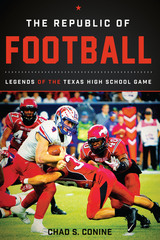 The Republic of Football: Legends of the Texas High School Game
Chad S. Conine
University of Texas Press, 2016 Anywhere football is played, Texas is the force to reckon with. Its powerhouse programs produce the best football players in America. In The Republic of Football, Chad S. Conine vividly captures Texas’s impact on the game with action-filled stories about legendary high school players, coaches, and teams from around the state and across seven decades. Drawing on dozens of interviews, Conine offers rare glimpses of the early days of some of football’s biggest stars. He reveals that some players took time to achieve greatness—LaDainian Tomlinson wasn’t even the featured running back on his high school team until a breakthrough game in his senior season vaulted him to the highest level of the sport—while others, like Colt McCoy, showed their first flashes of brilliance in middle school. In telling these and many other stories of players and coaches, including Hayden Fry, Spike Dykes, Bob McQueen, Lovie Smith, Art Briles, Lawrence Elkins, Warren McVea, Ray Rhodes, Dat Nguyen, Zach Thomas, Drew Brees, and Adrian Peterson, Conine spotlights the decisive moments when players caught fire and teams such as Celina, Southlake Carroll, and Converse Judson turned into Texas dynasties. Packed with never-before-told anecdotes, as well as fresh takes on the games everyone remembers, The Republic of Football is a must-read for all fans of Friday night lights.
 Republic of Images: A History of French Filmmaking
Alan Williams
Harvard University Press, 1992 Chronicling one of the greatest and most popular national cinemas, Republic of Images traces the evolution of French filmmaking from 1895—the year of the debut of the Cinematographe in Paris—to the present day. Alan Williams offers a unique synthesis of history, biography, aesthetics and film theory. He brings to life all of the major directors, setting before us the cultures from which they emerged, and sheds new light on the landmark films they created. He distills what is historically and artistically unique in each of their careers and reveals what each artist has in common with the forebears and heirs of the craft.
Within the larger story of French cinema, Williams examines the treasury of personal expression, social commentary, and aesthetic exploration that France has produced so consistently and exported so well. It is the tale of an industry rife with crises, and Williams offers a superb narrative of the economic, political, and social forces that have shaped its century-long history. He provides biographical sketches of filmmakers from the early pioneers of the silent era such as Louis Lumière and Alice Guy to modern directors such as Louis Malle, Claude Chabrol, and François Truffaut. Some of their careers, he shows, exemplify the significant contributions individuals made to the development of French fllmmaking; others yield illuminating evidence of the problems and opportunities of a whole generation of filmmakers. Throughout, he presents critical analyses of significant films, from The Assassination of the Duc de Guise (1908) to works by the post–nouvelle vague directors.
Williams captures the formal and stylistic developments of film in France over nearly one hundred years. Free of cant and jargon, Republic of Images is the best general account available of the rich interplay of film, filmmaker, and society. It will delight both general reader and student, as well as the viewer en route to the video store.
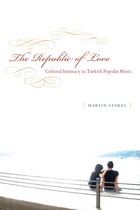 The Republic of Love: Cultural Intimacy in Turkish Popular Music
Martin Stokes
University of Chicago Press, 2010 At the heart of The Republic of Love are the voices of three musicians—queer nightclub star Zeki Müren, arabesk originator Orhan Gencebay, and pop diva Sezen Aksu—who collectively have dominated mass media in Turkey since the early 1950s. Their fame and ubiquity have made them national icons—but, Martin Stokes here contends, they do not represent the official version of Turkish identity propagated by anthems or flags; instead they evoke a much more intimate and ambivalent conception of Turkishness.
Using these three singers as a lens, Stokes examines Turkey’s repressive politics and civil violence as well as its uncommonly vibrant public life in which music, art, literature, sports, and journalism have flourished. However, Stokes’s primary concern is how Müren, Gencebay, and Aksu’s music and careers can be understood in light of theories of cultural intimacy. In particular, he considers their contributions to the development of a Turkish concept of love, analyzing the ways these singers explore the private matters of intimacy, affection, and sentiment on the public stage.
Republic of Mercy: Poems
Sharon Wang
Tupelo Press, 2018 In Sharon Wang’s thrilling and corporeal geometry, touch dominates, if often in its ‘aftermarks’: singes, whiffs, folds of fabric, echoing gestures between bodies. With generous language and quicksilver intelligence, Wang expresses ‘a hunger so large it stops the mouth.’ Her poems describe what is ‘hard and brilliant,’ the spaces between objects, and what’s left in the wake of losses. “Despite its attunement both to elegy and to witness, the mode is praise: ‘He loved the world. He loved it suddenly / and without reason.’ . . . As the poet works to understand, ‘If in fact it wasn’t possible to build / the world anew,’ she does build––extravagantly, judiciously, lovingly. The result is a book of radiant integrity.” — from the judges’ citation for the Kundiman Poetry Prize.
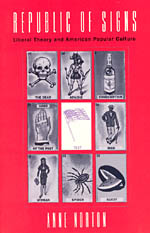 Republic of Signs: Liberal Theory and American Popular Culture
Anne Norton
University of Chicago Press, 1993 Norton examines the enactment of liberal ideas in popular culture; in the possessions of ordinary people and the habits of everyday life. She sees liberalism as the common sense of the American people: a set of conventions unconsciously adhered to, a set of principles silently taken for granted.
The author ranges over a wide expanse of popular activities (e.g. wrestling, roller derby, lotteries, shopping sprees, and dining out), as well as conventional political topics (e.g., the Constitution, presidency, news media, and centrality of law). Yet the argument is pointed and probling, never shallow or superficial. Fred and Wilma Flintstone are as vital to the republic as Franklin and Eleanor Roosevelt.
"In discussions that range from the Constitution and the presidency to money and shopping, voting, lotteries, and survey research, Norton discerns and imaginatively invents possibilities that exceed recognized actualities and already approved opportunities."—Richard E. Flathman, American Political Science Review
"[S]timulating and stylish exploration of political theory, language, culture, and shopping at the mall . . . popular culture at its best, informed by history and theory, serious in purpose, yet witty and modest in tone."—Bernard Mergen, American Studies International
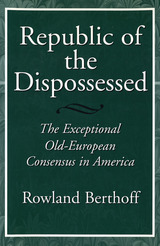 Republic of the Dispossessed: The Exceptional Old-European Consensus in America
Rowland Berthoff
University of Missouri Press, 1997
Do Americans, in all their cultural diversity, share any fundamental consensus? Does such a consensus, or anything else, make America exceptional in the modern world?
Since 1960 most historians have answered no--except perhaps for the current nostalgia for the Eisenhower years (the "Ozzie and Harriet" years of popular recollection) of middle-class American prosperity.
In Republic of the Dispossessed social historian Rowland Berthoff maintains not only that there was--and still is--a middle-class consensus and that America is exceptional in it but that it goes back some five hundred years. The consensus stems from all those European peasants and artisans who, from 1600 to 1950, fled dispossession in the Old World. They brought with them basic social values that acted as a template for middle-class American values. To consider modern American society as exceptional--that is, as distinctive and different from any contemporary European pattern of thought--is therefore, in Berthoff's theory, not at all the "illogical absurdity" that current conventional wisdom makes it.
The Berthoff thesis, as he develops it in these ten essays from throughout the course of his career, is well worth a second look by those within and beyond the field of social history. It suggests that the ideal--both peasant and classical republican-- of maintaining a balance between personal liberty and communal equality has long inspired American reaction to the drastic modern changes of industrialization, urbanization, and immigration.
Observing that most Americans still see themselves as independent, basically equal, middle-class citizens, Berthoff explains the current apprehension among Americans that at the end of the twentieth century they are once again being dispossessed-- thus, the current emphasis on "traditional values." Because that problem is the same that worried their European ancestors as much as five hundred years ago, Berthoff argues, the time has come to face the question head-on.
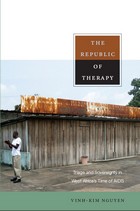 The Republic of Therapy: Triage and Sovereignty in West Africa’s Time of AIDS
Vinh-Kim Nguyen
Duke University Press, 2010 The Republic of Therapy tells the story of the global response to the HIV epidemic from the perspective of community organizers, activists, and people living with HIV in West Africa. Drawing on his experiences as a physician and anthropologist in Burkina Faso and Côte d’Ivoire, Vinh-Kim Nguyen focuses on the period between 1994, when effective antiretroviral treatments for HIV were discovered, and 2000, when the global health community acknowledged a right to treatment, making the drugs more available. During the intervening years, when antiretrovirals were scarce in Africa, triage decisions were made determining who would receive lifesaving treatment. Nguyen explains how those decisions altered social relations in West Africa. In 1994, anxious to “break the silence” and “put a face to the epidemic,” international agencies unwittingly created a market in which stories about being HIV positive could be bartered for access to limited medical resources. Being able to talk about oneself became a matter of life or death. Tracing the cultural and political logic of triage back to colonial classification systems, Nguyen shows how it persists in contemporary attempts to design, fund, and implement mass treatment programs in the developing world. He argues that as an enactment of decisions about who may live, triage constitutes a partial, mobile form of sovereignty: what might be called therapeutic sovereignty.
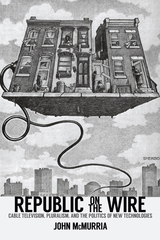 Republic on the Wire: Cable Television, Pluralism, and the Politics of New Technologies, 1948-1984
McMurria, John
Rutgers University Press, 2017 The history of cable television in America is far older than networks like MTV, ESPN, and HBO, which are so familiar to us today. Tracing the origins of cable TV back to the late 1940s, media scholar John McMurria also locates the roots of many current debates about premium television, cultural elitism, minority programming, content restriction, and corporate ownership. Republic on the Wire takes us back to the pivotal years in which media regulators and members of the viewing public presciently weighed the potential benefits and risks of a two-tiered television system, split between free broadcasts and pay cable service. Digging into rare archives, McMurria reconstructs the arguments of policymakers, whose often sincere advocacy for the public benefits of cable television were fueled by cultural elitism and the priority to maintain order during a period of urban Black rebellions. He also tells the story of the people of color, rural residents, women’s groups, veterans, seniors, and low-income viewers who challenged this reasoning and demanded an equal say over the future of television. By excavating this early cable history, and placing equality at the center of our understanding of media democracy, Republic on the Wire is a real eye-opener as it develops a new methodology for studying media policy in the past and present.
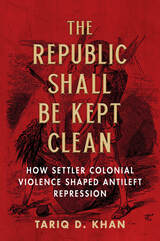 The Republic Shall Be Kept Clean: How Settler Colonial Violence Shaped Antileft Repression
Tariq D. Khan
University of Illinois Press, 2023 The long relationship between America’s colonizing wars and virulent anticommunism The colonizing wars against Native Americans created the template for anticommunist repression in the United States. Tariq D. Khan’s analysis reveals bloodshed and class war as foundational aspects of capitalist domination and vital elements of the nation’s long history of internal repression and social control. Khan shows how the state wielded the tactics, weapons, myths, and ideology refined in America’s colonizing wars to repress anarchists, labor unions, and a host of others labeled as alien, multi-racial, multi-ethnic urban rabble. The ruling classes considered radicals of all stripes to be anticolonial insurgents. As Khan charts the decades of red scares that began in the 1840s, he reveals how capitalists and government used much-practiced counterinsurgency rhetoric and tactics against the movements they perceived and vilified as “anarchist.” Original and boldly argued, The Republic Shall Be Kept Clean offers an enlightening new history with relevance for our own time.
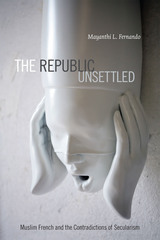 The Republic Unsettled: Muslim French and the Contradictions of Secularism
Mayanthi L. Fernando
Duke University Press, 2014 In 1989 three Muslim schoolgirls from a Paris suburb refused to remove their Islamic headscarves in class. The headscarf crisis signaled an Islamic revival among the children of North African immigrants; it also ignited an ongoing debate about the place of Muslims within the secular nation-state. Based on ten years of ethnographic research, The Republic Unsettled alternates between an analysis of Muslim French religiosity and the contradictions of French secularism that this emergent religiosity precipitated. Mayanthi L. Fernando explores how Muslim French draw on both Islamic and secular-republican traditions to create novel modes of ethical and political life, reconfiguring those traditions to imagine a new future for France. She also examines how the political discourses, institutions, and laws that constitute French secularism regulate Islam, transforming the Islamic tradition and what it means to be Muslim. Fernando traces how long-standing tensions within secularism and republican citizenship are displaced onto France's Muslims, who, as a result, are rendered illegitimate as political citizens and moral subjects. She argues, ultimately, that the Muslim question is as much about secularism as it is about Islam.
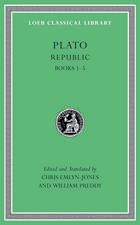 Republic, Volume I: Books 1–5
Plato
Harvard University Press, 2012 The Platonic ideal of government.
Plato of Athens, who laid the foundations of the Western philosophical tradition and in range and depth ranks among its greatest practitioners, was born to a prosperous and politically active family ca. 427 BC. In early life an admirer of Socrates, Plato later founded the first institution of higher learning in the West, the Academy, among whose many notable alumni was Aristotle. Traditionally ascribed to Plato are thirty-six dialogues developing Socrates’ dialectic method and composed with great stylistic virtuosity, together with thirteen letters.
Republic, a masterpiece of philosophical and political thought, concerns righteousness both in individuals and in communities, and proposes an ideal state organized and governed on philosophical principles. This edition, which replaces the original Loeb edition by Paul Shorey, offers text, translation, and annotation that are fully current with modern scholarship. The Loeb Classical Library edition of Plato is in twelve volumes.
 Republic, Volume I: Books 1-5
Plato
Harvard University Press Plato, the great philosopher of Athens, was born in 427 BCE. In early manhood an admirer of Socrates, he later founded the famous school of philosophy in the grove Academus. Much else recorded of his life is uncertain; that he left Athens for a time after Socrates' execution is probable; that later he went to Cyrene, Egypt, and Sicily is possible; that he was wealthy is likely; that he was critical of 'advanced' democracy is obvious. He lived to be 80 years old. Linguistic tests including those of computer science still try to establish the order of his extant philosophical dialogues, written in splendid prose and revealing Socrates' mind fused with Plato's thought.
In Laches, Charmides, and Lysis, Socrates and others discuss separate ethical conceptions. Protagoras, Ion, and Meno discuss whether righteousness can be taught. In Gorgias, Socrates is estranged from his city's thought, and his fate is impending. The Apology (not a dialogue), Crito, Euthyphro, and the unforgettable Phaedo relate the trial and death of Socrates and propound the immortality of the soul. In the famous Symposium and Phaedrus, written when Socrates was still alive, we find the origin and meaning of love. Cratylus discusses the nature of language. The great masterpiece in ten books, the Republic, concerns righteousness (and involves education, equality of the sexes, the structure of society, and abolition of slavery). Of the six so-called dialectical dialogues Euthydemus deals with philosophy; metaphysical Parmenides is about general concepts and absolute being; Theaetetus reasons about the theory of knowledge. Of its sequels, Sophist deals with not-being; Politicus with good and bad statesmanship and governments; Philebus with what is good. The Timaeus seeks the origin of the visible universe out of abstract geometrical elements. The unfinished Critias treats of lost Atlantis. Unfinished also is Plato's last work of the twelve books of Laws (Socrates is absent from it), a critical discussion of principles of law which Plato thought the Greeks might accept.
The Loeb Classical Library edition of Plato is in twelve volumes.
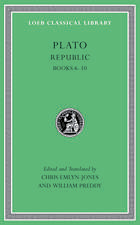 Republic, Volume II: Books 6–10
Plato
Harvard University Press, 2012 The Platonic ideal of government.
Plato of Athens, who laid the foundations of the Western philosophical tradition and in range and depth ranks among its greatest practitioners, was born to a prosperous and politically active family ca. 427 BC. In early life an admirer of Socrates, Plato later founded the first institution of higher learning in the West, the Academy, among whose many notable alumni was Aristotle. Traditionally ascribed to Plato are thirty-six dialogues developing Socrates’ dialectic method and composed with great stylistic virtuosity, together with thirteen letters.
Republic, a masterpiece of philosophical and political thought, concerns righteousness both in individuals and in communities, and proposes an ideal state organized and governed on philosophical principles. This edition, which replaces the original Loeb edition by Paul Shorey, offers text, translation, and annotation that are fully current with modern scholarship. The Loeb Classical Library edition of Plato is in twelve volumes.
 Republic, Volume II: Books 6-10
Plato
Harvard University Press Plato, the great philosopher of Athens, was born in 427 BCE. In early manhood an admirer of Socrates, he later founded the famous school of philosophy in the grove Academus. Much else recorded of his life is uncertain; that he left Athens for a time after Socrates' execution is probable; that later he went to Cyrene, Egypt, and Sicily is possible; that he was wealthy is likely; that he was critical of 'advanced' democracy is obvious. He lived to be 80 years old. Linguistic tests including those of computer science still try to establish the order of his extant philosophical dialogues, written in splendid prose and revealing Socrates' mind fused with Plato's thought.
In Laches, Charmides, and Lysis, Socrates and others discuss separate ethical conceptions. Protagoras, Ion, and Meno discuss whether righteousness can be taught. In Gorgias, Socrates is estranged from his city's thought, and his fate is impending. The Apology (not a dialogue), Crito, Euthyphro, and the unforgettable Phaedo relate the trial and death of Socrates and propound the immortality of the soul. In the famous Symposium and Phaedrus, written when Socrates was still alive, we find the origin and meaning of love. Cratylus discusses the nature of language. The great masterpiece in ten books, the Republic, concerns righteousness (and involves education, equality of the sexes, the structure of society, and abolition of slavery). Of the six so-called dialectical dialogues Euthydemus deals with philosophy; metaphysical Parmenides is about general concepts and absolute being; Theaetetus reasons about the theory of knowledge. Of its sequels, Sophist deals with not-being; Politicus with good and bad statesmanship and governments; Philebus with what is good. The Timaeus seeks the origin of the visible universe out of abstract geometrical elements. The unfinished Critias treats of lost Atlantis. Unfinished also is Plato's last work of the twelve books of Laws (Socrates is absent from it), a critical discussion of principles of law which Plato thought the Greeks might accept.
The Loeb Classical Library edition of Plato is in twelve volumes.
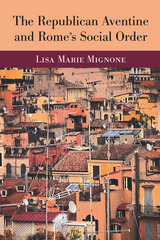 The Republican Aventine and Rome’s Social Order
Lisa Marie Mignone
University of Michigan Press, 2016 The Aventine—one of Rome’s canonical seven hills—has long been identified as the city’s plebeian district, which housed the lower orders of society and served as the political headquarters, religious citadel, and social bastion of those seeking radical reform of the Republican constitution. Lisa Marie Mignone challenges the plebeian-Aventine paradigm through a multidisciplinary review of the ancient evidence, demonstrating that this construct proves to be a modern creation. Mignone uses ancient literary accounts, material evidence, and legal and semantic developments to reconstruct and reexamine the history of the Aventine Hill. Through comparative studies of premodern urban planning and development, combined with an assessment of gang violence and ancient neighborhood practices in the latter half of the first century BCE, she argues that there was no concentration of the disadvantaged in a “plebeian ghetto.” Thus residency patterns everywhere in the caput mundi, including the Aventine Hill, likely incorporated the full spectrum of Roman society.
The myth of the “plebeian Aventine” became embedded not only in classical scholarship, but also in modern political and cultural consciousness; it has even been used by modern figures to support their political agenda. Yet The Republican Aventine and Rome’s Social Order makes bold new claims regarding the urban design and social history of ancient Rome and raises a significant question about ancient urbanism and social stability more generally: Did social integration reduce violence in premodern cities and promote urban concord?
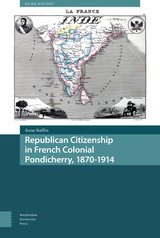 Republican Citizenship in French Colonial Pondicherry, 1870-1914
Anne Raffin
Amsterdam University Press, 2022 Republican Citizenship in French Colonial Pondicherry, 1870-1914 revisits and analyses the earlier part of the Third Republic, when France granted citizenship rights to Indians in Pondicherry. This work of historical sociology explores the nature of this colonial citizenship and enables comparisons with British India, especially the Madras Presidency, as well as the rest of the French empire, as a means of demonstrating how unique the practice of granting such rights was.
The difficulties of implementing a new political culture based on the language of rights and participatory political institutions were not so much rooted in a lack of assimilation into the French culture on the part of the Indian population. Rather, they were the result of political infighting and long-term conflicts over status, both in relation to caste and class, and between inclusive and exclusive visions of French citizenship.
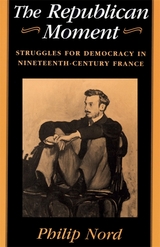 The Republican Moment: Struggles for Democracy in Nineteenth-Century France
Philip Nord
Harvard University Press, 1995 France in the mid-nineteenth century was shaken by a surge of civic activism, the "resurrection of civil society." But unlike similar developments throughout Europe, this civic mobilization culminated in the establishment of democratic institutions. How, Philip Nord asks, did France effect a successful transition from Louis-Napoleon's authoritarian Second Empire to a functioning republic based on universal suffrage and governed by middle-class parliamentarians? How did French civic activism take this democratic turn?
Nord provides the answers in a multidimensional narrative that encompasses not only history and politics but also religion, philosophy, art, literature, and gender. He traces the advance of democratic sentiment and the consolidation of political dissent at its strategic institutional sites: the lodges of Freemasonry, the University, the Paris Chamber of Commerce, the Protestant and Jewish consistories, the Paris bar, and the arts. It was the particular character and unfolding of these struggles, Nord demonstrates, that made an awakening middle class receptive to democratic politics. The new republican elite was armed with a specific vision that rallied rural France--a vision of solidarity and civic-mindedness, of moral improvement, and of a socioeconomic order anchored in family enterprise.
Nord's trenchant analysis explains how and why the Third Republic (1870-1940) endured longer than any other regime since the 1789 revolution. The convergence of republican currents at midcentury bequeathed to the French nation a mature civil society, a political elite highly trained in the arts of democratic politics, and an agenda that encompassed not only constitutional reform but also a reformation of private life and public culture.
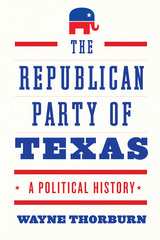 The Republican Party of Texas: A Political History
By Wayne Thorburn
University of Texas Press, 2021 On July 4, 1867, a group of men assembled in Houston to establish the Republican Party of Texas. Combatting entrenched statewide support for the Democratic Party and their own internal divisions, Republicans struggled to gain a foothold in the Lone Star State, which had sided with the Confederacy and aligned with the Democratic platform. In The Republican Party of Texas, Wayne Thorburn, former executive director of the Texas GOP, chronicles over one hundred and fifty years of the defeats and victories of the party that became the dominant political force in Texas in the modern era. Thorburn documents the organizational structure of the Texas GOP, drawing attention to prominent names, such as Harry Wurzbach and George W. Bush, alongside lesser-known community leaders who bolstered local support. The 1960s and 1970s proved a watershed era for Texas Republicans as they shored up ideological divides and elected the first Republican governor and more state senators and congressional representatives than ever before. From decisions about candidates and shifting allegiances and political stances, to race-based divisions and strategic cooperation with leaders in the Democratic Party, Thorburn unearths the development of the GOP in Texas to understand the unique Texan conservatism that prevails today.
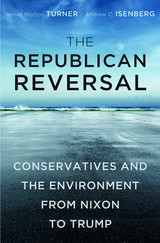 The Republican Reversal: Conservatives and the Environment from Nixon to Trump
James Morton Turner and Andrew C. Isenberg
Harvard University Press, 2018 Not long ago, Republicans could take pride in their party’s tradition of environmental leadership. In the late 1960s and early 1970s, the GOP helped to create the Environmental Protection Agency, extend the Clean Air Act, and protect endangered species. Today, as Republicans denounce climate change as a “hoax” and seek to dismantle the environmental regulatory state they worked to build, we are left to wonder: What happened?
In The Republican Reversal, James Morton Turner and Andrew C. Isenberg show that the party’s transformation began in the late 1970s, with the emergence of a new alliance of pro-business, libertarian, and anti-federalist voters. This coalition came about through a concerted effort by politicians and business leaders, abetted by intellectuals and policy experts, to link the commercial interests of big corporate donors with states’-rights activism and Main Street regulatory distrust. Fiscal conservatives embraced cost-benefit analysis to counter earlier models of environmental policy making, and business tycoons funded think tanks to denounce federal environmental regulation as economically harmful, constitutionally suspect, and unchristian, thereby appealing to evangelical views of man’s God-given dominion of the Earth.
As Turner and Isenberg make clear, the conservative abdication of environmental concern stands out as one of the most profound turnabouts in modern American political history, critical to our understanding of the GOP’s modern success. The Republican reversal on the environment is emblematic of an unwavering faith in the market, skepticism of scientific and technocratic elites, and belief in American exceptionalism that have become the party’s distinguishing characteristics.
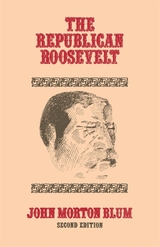 The Republican Roosevelt: Second Edition
John Morton Blum
Harvard University Press, 1977 This is a book about politics and politicians; about elections, lawmaking, governing, and how they work. It is also about power, its increasing concentration in American society, and its implications at home and abroad especially for those who exercise it. It is a book about the Republican Party during the period in which it developed the forces and frictions which still characterize it today. Finally, it is a book about a remarkably successful and vibrant man who contained within himself much of the best and the worst of his environment, who contributed generously to American life, who knew in his time disappointment, temptation, and pain, but also glory; a man remembered most by his intimates for the “fun of him.”
The author is in an enviable position to assess these matters. During five years as Associate Editor of The Letters of Theodore Roosevelt, he read and studied all TR's letters as well as all his published works, and delved deeply into the relevant literature of the period, including the vast material in the Congressional Record. From this rich store, John Morton Blum has drawn a new interpretation of Roosevelt the conservative, Roosevelt the professional Republican politician and Roosevelt the leader of men. He presents new material on Roosevelt's work as the manager of the Republican Party and as manager of Congress. He relates Roosevelt's roles in these situations to his conduct of foreign policy—a foreign policy so anticipatory of that of contemporary America—and to his Progressiveness—a doctrine of government with strong affinities to both the New Deal and the New Crusade.
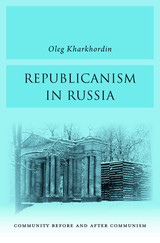 Republicanism in Russia: Community Before and After Communism
Oleg Kharkhordin
Harvard University Press, 2018 If Marxism was the apparent loser in the Cold War, it cannot be said that liberalism was the winner, at least not in Russia. Oleg Kharkhordin is not surprised that institutions of liberal democracy failed to take root following the dissolution of the Soviet Union. In Republicanism in Russia, he suggests that Russians can find a path to freedom by looking instead to the classical tradition of republican self-government and civic engagement already familiar from their history.
Republicanism has had a steadfast presence in Russia, in spite of tsarist and communist hostility. Originating in the ancient world, especially with Cicero, it continued by way of Machiavelli, Montesquieu, Tocqueville, and more recently Arendt. While it has not always been easy for Russians to read or write classical republican philosophy, much less implement it, republican ideas have long flowered in Russian literature and are part of a common understanding of freedom, dignity, and what constitutes a worthy life. Contemporary Russian republicanism can be seen in movements defending architectural and cultural heritage, municipal participatory budgeting experiments, and shared governance in academic institutions. Drawing on recent empirical research, Kharkhordin elaborates a theory of res publica different from the communal life inherited from the communist period, one that opens up the possibility for a genuine public life in Russia.
By embracing the indigenous Russian reception of the classical republican tradition, Kharkhordin argues, today’s Russians can sever their country’s dependence on the residual mechanisms of the communist past and realize a new vision for freedom.
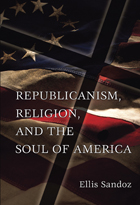 Republicanism, Religion, and the Soul of America
Ellis Sandoz
University of Missouri Press, 2006 As debates rage over the place of faith in our national life, Tocqueville’s nineteenth-century crediting of religion for shaping America is largely overlooked today. Now, in Republicanism, Religion, and the Soul of America, Ellis Sandoz reveals the major role that Protestant Christianity played in the formation and early period of the American republic. Sandoz traces the rise of republican government from key sources in Protestant civilization, paying particular attention to the influence of the Bible on the Founders and the blossoming of the American mind in the eighteenth century. Sandoz analyzes the religious debt of the emergent American community and its elevation of the individual person as unique in the eyes of the Creator. He shows that the true distinction of American republicanism lies in its grounding of human dignity in spiritual individualism and an understanding of man’s capacity for self-government under providential guidance. Along the way, he addresses such topics as the neglected question of the education of the Founders for their unique endeavor, common law constitutionalism, the place of Latin and Greek classics in the Founders’ thought, and the texture of religious experience from the Great Awakening to the Declaration of Independence To establish a unifying theoretical perspective for his study, Sandoz considers the philosophical underpinnings of religion and the contribution that Eric Voegelin made to our understanding of religious experience. He contributes fresh studies of the character of Voegelin’s thought: its relationship to Christianity; his debate with Leo Strauss over reason, revelation, and the meaning of philosophy; and the theory of Gnosticism as basic to radical modernity. He also provides a powerful account of the spirit of Voegelin’s later writings, contrasting the political scientist with the meditative spiritualist and offering new insight into volume 5 of Order and History. Republicanism, Religion, and the Soul of America concludes with timely reflections on the epoch now unfolding in the shadow of Islamic jihadism. Bringing a wide range of materials into a single volume, it confronts current academic concerns with religion while offering new insight into the construction of the American polity—and the heart of Americanism as we know it today.
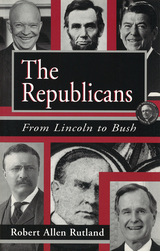 The Republicans: From Lincoln to Bush
Robert Allen Rutland
University of Missouri Press, 1996
The Republican party has always been fascinating to those who subscribe to its principles, as well as to those who take an alternative stand on the issues. In The Republicans: From Lincoln to Bush, Robert Allen Rutland has brought a clear and concise understanding of this political party to the general reader. The book is a lucid and fast-paced overview of the Republican party from its beginnings in the 1850s through the 1994 congressional elections, which saw the Democratic domination of the House and Senate come to an abrupt end.
In a crisp, highly readable style, Rutland begins by explaining how the "obnoxious" Kansas-Nebraska Act of 1854 overturned the Missouri Compromise, inflamed the North, and caused the collapse of the Whig and American parties. The result was the birth of the Republican party, whose purpose was to oppose the Democrats and stop the spread of slavery. Abraham Lincoln was elected the first Republican president in 1860.
The Republicans suggests that a major shift in voting strength took place twice during the twentieth century, first in the New Deal years, and again after 1968 when the GOP made an appeal to southern voters and finally took control of the area that had previously been dominated by the Democrats. With the 1980 election of Ronald Reagan as the fortieth president of the United States, the Republicans gained support from many first-time voters, middle-class whites, and labor unions-- groups not previously expected to vote Republican. In the companion volume, The Democrats: From Jefferson to Clinton, Rutland provides an honest and straightforward assessment of the strengths and weaknesses of Democratic presidents. Here he presents an evenhanded look at the good and not-so-good Republicans. By skillfully using stories and anecdotes from various administrations to enliven this narrative of political history, Rutland gives Republicans and Democrats alike a deeper appreciation for the two-party system.
The Republics
Nathalie Handal
University of Pittsburgh Press, 2015 “The Republics is a massively brilliant new work, a leap in literature we have not seen. It’s gripping, harrowing, and at times horrific while its form paradoxically is fresh, luscious, and original. Bypassing pity and transforming pain into language Handal stars. She has recorded like Alice Walker, Paul Celan, John Hershey, and Carolyn Forché some of the worst civilization has offered humankind and somehow made it art.”—Sapphire
Republics and Kingdoms Compared
Aurelio Lippo Brandolini
Harvard University Press, 2009 Aurelio Lippo Brandolini’s Republics and Kingdoms Compared is the most fascinating and least-known work of humanist political theory before Machiavelli. A Socratic dialogue set in the court of King Mattias Corvinus of Hungary (ca. 1490), the work depicts a debate between the king himself and a Florentine merchant at his court on the relative merits of republics and kingdoms.
In effect a searing critique of Florentine civic humanism, the work discusses such issues as free trade and the morality of commerce, the inequalities of wealth typical of republics, the nature of freedom and justice, the reasons for the rise and fall of empires, the causes of political corruption, and the conditions necessary for the flourishing of arts, letters, and culture generally. This is the first critical edition and the first translation into any language.
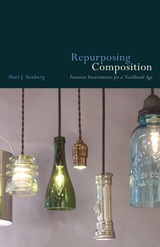 Repurposing Composition: Feminist Interventions for a Neoliberal Age
Shari J. Stenberg
Utah State University Press, 2015 In Repurposing Composition, Shari J. Stenberg responds to the increasing neoliberal discourse of academe through the feminist practice of repurposing. In doing so, she demonstrates how tactics informed by feminist praxis can repurpose current writing pedagogy, assessment, public engagement, and other dimensions of writing education. Stenberg disrupts entrenched neoliberalism by looking to feminism’s long history of repurposing “neutral” practices and approaches to the rhetorical tradition, the composing process, and pedagogy. She illuminates practices of repurposing in classroom moments, student writing, and assessment work, and she offers examples of institutions, programs, and individuals that demonstrate a responsibility approach to teaching and learning as an alternative to top-down accountability logic. Repurposing Composition is a call for purposes of work in composition and rhetoric that challenge neoliberal aims to emphasize instead a public-good model that values difference, inclusion, and collaboration.
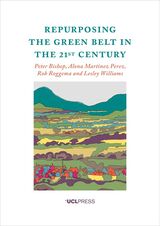 Repurposing the Green Belt in the 21st Century
Peter Bishop, Alona Martinez, Rob Roggema, and Lesley Williams
University College London, 2020 The green belt has been one of the UK’s most consistent and successful planning policies. It has limited urban sprawl and preserved the countryside around cities—but what is its role in an era of unprecedented urban growth and potentially catastrophic climate change? Repurposing the Green Belt in the 21st Century examines the history of the green belt in the UK and how it has influenced planning regimes in other countries. Despite the undoubted achievements of the green belt, the authors argue, it is time to review it as an instrument of urban planning and landscape design, now that the problem of the ecological impact of cities and the mitigation measures of major climate changes are at the top of the urban agenda across the world.
Through an examination of practice in the UK, the Netherlands, Spain, and Germany, Repurposing the Green Belt in the 21st Century proposes a framework for a reconsideration of the critical relationship between the city and its hinterlands. It will be useful for undergraduate and postgraduate students of planning, landscape architecture, urban design, architecture, and land economics, as well as practitioners in design, planning, and real estate.
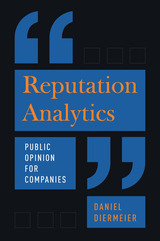 Reputation Analytics: Public Opinion for Companies
Daniel Diermeier
University of Chicago Press, 2023 A scientific approach to corporate reputation from the field’s leading scholar. Public opinion is a core factor of any organization’s success—and sometimes its failings. Whether through crisis, mismanagement, or sudden shifts in public sensibility, an organization can run afoul in the span of a Tweet. In Reputation Analytics, Daniel Diermeier offers the first rigorous analytical framework for understanding and managing corporate reputation and public perception. Drawing on his expertise as a political scientist and management scholar, Diermeier incorporates lessons from game theory, psychology, and text analytics to create a methodology that has immediate application in both scholarship and practice. A milestone work from one of social science’s most eminent scholars, Reputation Analytics unveils an advanced understanding of an elusive topic, resulting in an essential guide for academics and readers across industries.
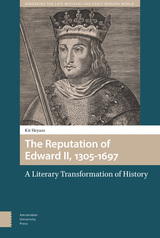 The Reputation of Edward II, 1305-1697: A Literary Transformation of History
Kit Heyam
Amsterdam University Press, 2020 During his lifetime and the four centuries following his death, King Edward II (1307-1327) acquired a reputation for having engaged in sexual and romantic relationships with his male favourites, and having been murdered by penetration with a red-hot spit. This book provides the first account of how this reputation developed, providing new insights into the processes and priorities that shaped narratives of sexual transgression in medieval and early modern England. In doing so, it analyses the changing vocabulary of sexual transgression in English, Latin and French; the conditions that created space for sympathetic depictions of same-sex love; and the use of medieval history in early modern political polemic. It also focuses, in particular, on the cultural impact of Christopher Marlowe’s Edward II (c.1591-92). Through such close readings of poetry and drama, alongside chronicle accounts and political pamphlets, it demonstrates that Edward’s medieval and early modern afterlife was significantly shaped by the influence of literary texts and techniques. A ‘literary transformation’ of historiographical methodology is, it argues, an apposite response to the factors that shaped medieval and early modern narratives of the past.
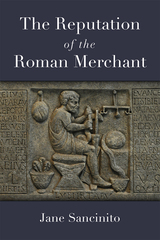 The Reputation of the Roman Merchant
Jane Sancinito
University of Michigan Press, 2024 Roman merchants, artisans, and service providers faced substantial prejudice. Contemporary authors labeled them greedy, while the Roman on the street accused merchants of lying and cheating. Legally and socially, merchants were kept at arm’s length from respectable society. Yet merchants were common figures in daily life, populating densely packed cities and traveling around the Mediterranean. The Reputation of the Roman Merchant focuses on the strategies retailers, craftsmen, and many other workers used to succeed, examining how they developed good reputations despite the stigma associated with their work. In a novel approach, blending social and economic history, The Reputation of the Roman Merchant considers how reputation worked as an informal institution, establishing and reinforcing traditional Roman norms while lowering the cost of doing business for individual workers. From histories and novels to inscriptions and art, this volume identifies common reputation strategies, explores how points of pride and personal accomplishments were shared with others, and explains responses to merchant activities on the small-scale. The book concludes that merchants invested heavily in their reputations as a way to set themselves apart from common, negative stereotypes without admitting that there was anything shameful about the work they did.
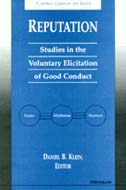 Reputation: Studies in the Voluntary Elicitation of Good Conduct
Daniel B. Klein, Editor
University of Michigan Press, 1997 "Tricks and treachery are the practice of fools that have not wit enough to be honest," wrote Benjamin Franklin. This volume explores ways in which the honest establish trust and enjoy good fortune, even without policing. The central mechanism at work is reputation. To work, information about the individual's conduct must be observed, interpreted, recorded, stored, and transmitted. Different forms of "seals of approval" develop to communicate the quality of an individual's reputation to others.
The studies in this volume reveal how vast information systems like Dun & Bradstreet and TRW generate reputation and beneficial exchange, and how brand names, middlemen, and dealers give their own sort of seal of approval. One chapter describes the origins of Underwriters' Laboratories, an organization that sells its inspection services and mark of approval for product safety. Another argues that J. P. Morgan's investment banking service was in large part applying astute judgment in granting the Morgan seal of approval to firms in need of capital. Other, less formal, reputational mechanisms such as gossip, customary law, and written correspondence are also explored. Contexts range from trust among merchants in Medieval Europe, social control in small communities, and good conduct in a vast anonymous society such as our own.
Throughout these broad-ranging studies, the central theme of the volume emerges: in an open, competitive environment, honesty can recruit cleverness to assert itself and to drive out the dishonest. Contributors include Bruce Benson, Harry Chase Brearly, J. Benson De Long, Avner Greif, Benjamin Klein, Keith B. Leffler, Sally Engle Merry, Paul R. Milgrom, J. Wilson Newman, Douglass C. North, Marc Ryser, Adam Smith, Gordon Tullock, and Barry R. Weingast.
Daniel B. Klein is Assistant Professor of Economics, University of California, Irvine.
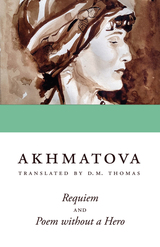 Requiem and Poem without a Hero
Anna Akhmatova
Ohio University Press, 2001 With this edition Swallow Press presents two of Anna Akhmatova’s best-known works that represent the poet at full maturity, and that most trenchantly process the trauma she and others experienced living under Stalin’s regime. Akhmatova began the three-decade process of writing “Requiem” in 1935 after the arrests of her son, Lev Gumilev, and her third husband. The autobiographical fifteen-poem cycle primarily chronicles a mother’s wait—lining up outside Leningrad Prison every day for seventeen months—for news of her son’s fate. But from this limbo, Akhmatova expresses and elevates the collective grief for all the thousands vanished under the regime, and for those left behind to speculate about their loved ones’ fates. Similarly, Akhmatova wrote “Poem without a Hero” over a long period. It takes as its focus the transformation of Akhmatova’s beloved city of St. Petersburg—historically a seat of art and culture—into Leningrad. Taken together, these works plumb the foremost themes for which Akhmatova is known and revered. When Ohio University Press published D. M. Thomas’s translations in 1976, it was the first time they had appeared in English. Under Thomas’s stewardship, Akhmatova’s words ring clear as a bell.
Requiem for a German Past: A Boyhood among the Nazis
Jurgen Herbst
University of Wisconsin Press, 2002 Jurgen Herbst’s account of growing up in Nazi Germany from 1928 to 1948 is a boy’s experience of anti-Semitism and militarism from the inside. Herbst was a middle-class boy in a Lutheran family that saw value in Prussian military ideals and a mythic German past. His memoir is a compelling, understated tale of moral awakening.
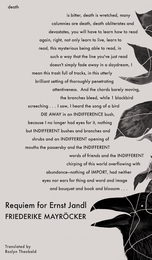 Requiem for Ernst Jandl
Friederieke Mayröcker
Seagull Books, 2018 A lyrical requiem for Mayröcker's late partner, the writer Ernst Jandl.
Austrian poet and playwright Ernst Jandl died in 2000, leaving behind his partner, poet Friederike Mayröcker—and bringing to an end a half century of shared life, and shared literary work. Mayröcker immediately began attempting to come to terms with his death in the way that poets struggling with loss have done for millennia: by writing. Requiem for Ernst Jandl is the powerfully moving outcome. In this quiet but passionate lament that grows into a song of enthralling intensity, Mayröcker recalls memories and shared experiences, and—with the sudden, piercing perception of regrets that often accompany grief—reads Jandl’s works in a new light. Alarmed by a sudden, existential emptiness, she reflects on the future, and the possibility of going on with her life and work in the absence of the person who, as we see in this elegy, was a constant conversational and creative partner.
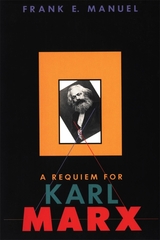 A Requiem for Karl Marx
Frank E. Manuel
Harvard University Press, 1995 As Karl Marx the icon has fallen along with so many communist regimes, we are left with the mystery of Karl Marx the man, the complexities of a life that has profoundly affected millions. A Requiem for Karl Marx is Frank Manuel's searching meditation on that life, a learned and elegantly written engagement with the man and his work.
Manuel gives us a psychological portrait rendered with sympathy and critical detachment, a probing look at the connections between the private drama of Marx's life and his revolutionary ideas. Manuel pursues these connections from Marx's adolescence and education in Trier through his university studies, marriage to a German baroness, and early affiliation with French and German radical groups. Here we see Marx in moments of youthful rapture, in periods of despair, in maneuvers of blatant hypocrisy, in outbursts of self-mockery. We follow his involuted response to his status as a converted Jew, observe the psychic toll of debilitating bouts of illness, and witness the shattering effects of his aggressive, often brutal conduct toward friend and foe alike. Manuel analyzes in intricate detail the central role of Marx's enduring relationship with Friedrich Engels, which appears to transcend the bounds of friendship, and his changing behavior toward his wife, Jenny, the neurotic and tragic figure who shared his dismal London exile.
What becomes clear in this narrative is the link between Marx's personal life and his ideas about class struggle, revolutionary strategy, and utopia--as well as the impact of his personal vision and political tactics on the movements that followed him, down to our day.
 Requiem for Nature
John Terborgh
Island Press, 1999 For ecologist John Terborgh, Manu National Park in the rainforest of Peru is a second home; he has spent half of each of the past twenty-five years there conducting research. Like all parks, Manu is assumed to provide inviolate protection to nature. Yet even there, in one of the most remote corners of the planet, Terborgh has been witness to the relentless onslaught of civilization. Seeing the steady destruction of irreplaceable habitat has been a startling and disturbing experience for Terborgh, one that has raised urgent questions: Is enough being done to protect nature? Are current conservation efforts succeeding? What could be done differently? What should be done differently? In Requiem for Nature, he offers brutally honest answers to those difficult questions, and appraises the prospects for the future of tropical conservation. His book is a clarion call for anyone who cares about the quality of the natural world we will leave our children. Terborgh examines current conservation strategies and considers the shortcomings of parks and protected areas both from ecological and institutional perspectives. He explains how seemingly pristine environments can gradually degrade, and describes the difficult social context –a debilitating combination of poverty, corruption, abuses of power, political instability, and a frenzied scramble for quick riches –in which tropical conservation must take place. He considers the significant challenges facing existing parks and examines problems inherent in alternative approaches, such as ecotourism, the exploitation of nontimber forest products, "sustainable use," and "sustainable development." Throughout, Terborgh argues that the greatest challenges of conservation are not scientific, but are social, economic, and political, and that success will require simultaneous progress on all fronts. He makes a compelling case that nature can be saved, but only if good science and strong institutions can be thoughtfully combined.
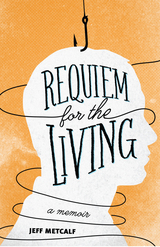 Requiem for the Living: A Memoir
Metcalf
University of Utah Press, 2014 After nine years of keeping his prostate cancer at bay, the clinical trials and cancer drugs lost their effectiveness. Instead of withdrawing from the world, Jeff Metcalf chose to dive deeper into writing, challenging himself to write one essay each week for a year. That collection of fifty-two essays was chosen by the Utah Division of Arts and Museums as the winner of their 2012 Original Writing Competition. Requiem for the Living contains the best of these essays, selected and reworked by the author, who continues to defy his earlier diagnosis. The essays form a unique memoir, painting a rich portrait of a man who has had a full and engaging life. Funny, moving and profoundly personal, they celebrate living and serve as a reminder to us all. He does not describe a life defined by cancer but rather writes to discover what his life has been, who he has become, and what he has learned along the way.
Recipient of the Mayor's Award in Literary Arts at the Utah Arts Festival in 2015.
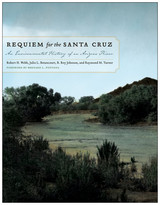 Requiem for the Santa Cruz: An Environmental History of an Arizona River
Robert H. Webb, Julio L. Betancourt, R. Roy Johnson, and Raymond M. Turner; Foreword by Bernard L. Fontana
University of Arizona Press, 2014 In prehistoric times, the Santa Cruz River in what is now southern Arizona saw many ebbs, flows, and floods. It flowed on the surface, meandered across the floodplain, and occasionally carved deep channels or arroyos into valley fill. Groundwater was never far from the surface, in places outcropping to feed marshlands or ciénegas. In these wet places, arroyos would heal quickly as the river channel revegetated, the thriving vegetation trapped sediment, and the channel refilled. As readers of Requiem for the Santa Cruz learn, these aridland geomorphic processes also took place in the valley as Tucson grew from mud-walled village to modern metropolis, with one exception: historical water development and channel changes proceeded hand in glove, each taking turns reacting to the other, eventually lowering the water table and killing a unique habitat that can no longer recover or be restored.
Authored by an esteemed group of scientists, Requiem for the Santa Cruz thoroughly documents this river—the premier example of historic arroyo cutting during the late nineteenth and early twentieth centuries, when large floodflows cut down through unconsolidated valley fill to form deep channels in the major valleys of the American Southwest. Each chapter provides a unique opportunity to chronicle the arroyo legacy, evaluate its causes, and consider its aftermath. Using more than a collective century of observations and collections, the authors reconstruct the circumstances of the river’s entrenchment and the groundwater mining that ultimately killed the marshlands, a veritable mesquite forest, and a birdwatcher's paradise.
Today, communities everywhere face this conundrum: do we manage ephemeral rivers through urban areas for flood control, or do we attempt to restore them to some previous state of perennial naturalness? Requiem for the Santa Cruz carefully explores the legacies of channel change, groundwater depletion, flood control, and nascent attempts at river restoration to give a long-term perspective on management of rivers in arid lands. Tied together by authors who have committed their life’s work to the study of aridland rivers, this book offers a touching and scientifically grounded requiem for the Santa Cruz and every southwestern river.
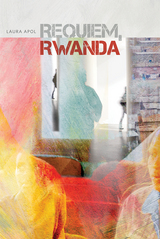 Requiem, Rwanda
Laura Apol
Michigan State University Press, 2015 A marvelous, moving new collection of poems, Requiem, Rwanda has its roots in 2006, when Laura Apol made her first trip to Rwanda. Apol’s initial goal was to develop, in conjunction with Rwandan and American colleagues, a project using narrative writing to facilitate healing among young survivors of the 1994 genocide. During the time she spent leading workshops, Apol felt moved to write her own poems, and after the writing-for-healing project ended, she returned to Rwanda several times to continue her creative work. The legacy of the genocide—on the people, on the land itself—makes its presence felt in many of the poems. The poems are also accounts of Apol’s relationships with and understandings of people post-genocide—where their stories go, how they reenter their lives, and how a country that has been deeply wounded by its history continues on. These poems don’t shy away from exploring the complications of being a white woman, a Westerner, and a witness in this setting: Apol relates her sense of compassion, privilege, horror, guilt, voyeurism, obligation, and love. This new collection is a rich testimonial to the strength of a nation and its people. The collection includes a closing essay, "Writer as a Witness."
Requirements for Certification of Teachers, Counselors, Librarians, Administrators for Elementary and Secondary Schools, 2005-2006, Seventieth Edition
Edited by Elizabeth A. Kaye
University of Chicago Press, 2005 This annual volume, conveniently organized by state, offers the most complete and current listings of the requirements for certification of a wide range of educational professionals at the elementary and secondary levels. Changes to requirements resulting from the federal No Child Left Behind Act, paired with state budget deficits and understaffed certification offices, have made it especially difficult to access this information. Now more than ever, Requirements for Certification is a valuable resource, making much-needed knowledge available in one straightforward volume.
Requirements for Certification of Teachers, Counselors, Librarians, Administrators for Elementary and Secondary Schools, Seventy-first Edition, 2006-2007
Edited by Elizabeth A. Kaye
University of Chicago Press, 2006 This annual volume, conveniently organized by state, offers the most complete and current listings of the requirements for certification of a wide range of educational professionals at the elementary and secondary levels. Changes to requirements resulting from the federal No Child Left Behind Act, paired with state budget deficits and understaffed certification offices, have made it especially difficult to access this information. Now more than ever, Requirements for Certification is a valuable resource, making much-needed knowledge available in one straightforward volume.
Requirements for Electrical Installations, IET Wiring Regulations, Eighteenth Edition, BS 7671:2018
The Institution of Engineering and Technology
The Institution of Engineering and Technology, 2018 The IET Wiring Regulations are of interest to all those concerned with the design, installation and maintenance of electric wiring in buildings. This includes electricians, electrical contractors, consultants, local authorities, surveyors and architects. This book will also be of interest to professional engineers, as well as students at university and further education colleges.
Requirements for Electrical Installations, IET Wiring Regulations, Eighteenth Edition, BS 7671:2018+A2:2022
The Institution of Engineering and Technology
The Institution of Engineering and Technology, 2022 The IET Wiring Regulations is the national standard for electrical installations in domestic, commercial and industrial settings. It is the essential standard for all those concerned with the design, installation, certification and maintenance of electrical installations. Amendment 2:2022 is a major update to BS 7671:2018, The IET Wiring Regulations, Eighteenth Edition.
Requirements for Electrical Installations, IET Wiring Regulations, Seventeenth Edition, BS 7671:2008+A3:2015
The Institution of Engineering and Technology
The Institution of Engineering and Technology, 2015 The IET Wiring Regulations are of interest to all those concerned with the design, installation and maintenance of electric wiring in buildings. The market includes electricians, electrical contractors, consultants, local authorities, surveyors and architects. This book will also be of interest to professional engineers, as well as students at university and further education colleges.
ReRAM-based Machine Learning
Hao Yu
The Institution of Engineering and Technology, 2021 The transition towards exascale computing has resulted in major transformations in computing paradigms. The need to analyze and respond to such large amounts of data sets has led to the adoption of machine learning (ML) and deep learning (DL) methods in a wide range of applications.
Rereading Aristotle's Rhetoric
Edited by Alan G. Gross and Arthur E. Walzer
Southern Illinois University Press, 2000 In this collection edited by Alan G. Gross and Arthur E. Walzer, scholars in communication, rhetoric and composition, and philosophy seek to “reread” Aristotle’s Rhetoric from a purely rhetorical perspective. So important do these contributors find the Rhetoric, in fact, that a core tenet in this book is that “all subsequent rhetorical theory is but a series of responses to issues raised by the central work.” The essays reflect on questions basic to rhetoric as a humanistic discipline. Some explore the ways in which the Rhetoric explicates the nature of the art of rhetoric, noting that on this issue, the tensions within the Rhetoric often provide a direct passageway into our own conflicts.
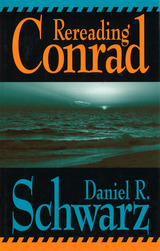 Rereading Conrad
Daniel R.Schwarz
University of Missouri Press, 2001
Leading Conradian scholar Daniel R. Schwarz assembles his work from over the past two decades into one crucial volume, providing a significant reexamination of a seminal figure who continues to be a major focus in the twenty-first century. Schwarz touches on virtually all of Joseph Conrad's work including his masterworks and the later, relatively neglected fiction.
In his introduction and in the persuasive and insightful essays that follow, Schwarz explores how the study of Conrad has changed and why Conrad is such a focus of interest in terms of gender, postcolonial, and cultural studies. He also demonstrates how Conrad helps define the modernist cultural tradition.
Exploring such essential works as Heart of Darkness, Lord Jim, Nostromo, and "The Secret Sharer," Schwarz addresses issues raised by recent theory, discussing the ways in which contemporary readers, including, of course, himself, have come to read Conrad differently. He does so without abandoning crucial Conradian themes such as the disjunction between interior and articulated motives and the discrepancies between dimly acknowledged needs, obsessions, and compulsions and actual behavior.
Schwarz also touches on the extent to which Conrad's conservative desires for a few simple moral and political ideas were often at odds with his profound skepticism. A powerful close reader of Conrad's complex texts, Schwarz stresses how from their opening paragraphs Conrad's works establish a grammar of psychological, political, and moral cause and effect.
Rereading Conrad sheds new light on an author who has spoken to readers for over a century. Schwarz's essays take account of recent developments in theory and cultural studies, including postcolonial, feminist, gay, and ecological perspectives, and show how reading Conrad has changed in the face of the theoretical explosion that has occurred over the past two decades. Because for over three decades Schwarz has been an important figure in defining how we read Conrad and in studying modernism, including how we respond to the relationship between modern literature and modern art, scholars, teachers, and students will take great pleasure in this new collection of his work.
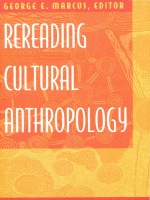 Rereading Cultural Anthropology
George E. Marcus, ed.
Duke University Press, 1992 During its first six years (1986–1991), the journal Cultural Anthropology provided a unique forum for registering the lively traffic between anthropology and the emergent arena of cultural studies. The nineteen essays collected in Rereading Cultural Anthropology, all of which originally appeared in the journal, capture the range of approaches, internal critiques, and new questions that have characterized the study of anthropology in the 1980s, and which set the agenda for the present.
Drawing together work by both younger and well-established scholars, this volume reveals various influences in the remaking of traditions of ethnographic work in anthropology; feminist studies, poststructuralism, cultural critiques, and disciplinary challenges to established boundaries between the social sciences and humanities. Moving from critiques of anthropological representation and practices to modes of political awareness and experiments in writing, this collection offers systematic access to what is now understood to be a fundamental shift (still ongoing) in anthropology toward engagement with the broader interdisciplinary stream of cultural studies.
Contributors. Arjun Appadurai, Keith H. Basso, David B. Coplan, Vincent Crapanzano, Faye Ginsburg, George E. Marcus, Enrique Mayer, Fred Meyers, Alcida R. Ramos, John Russell, Orin Starn, Kathleen Stewart, Melford E. Spiro, Ted Swedenburg, Michael Taussig, Julie Taylor, Robert Thornton, Stephen A. Tyler, Geoffrey M. White
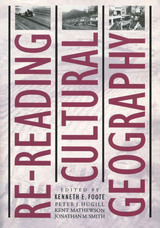 Re-reading Cultural Geography
Edited by Kenneth E. Foote, Peter J. Hugill, Kent Mathewson, and Jonathan M. Smith
University of Texas Press, 1994 The geography of culture has held a sustained attraction for some of the most distinguished and promising geographers of the twentieth century. These notable voices have now been brought together to explore the cultural landscape in this fresh, encompassing survey of one of geography's most vital research areas. In Re-reading Cultural Geography, a worthy successor to the original and now classic Readings in Cultural Geography (1962), the editors have gathered articles, essays, and new commentaries, as well as extensive annotated reading lists and a comprehensive bibliography, into a book that will be ideal for undergraduate and graduate courses of all levels. Assessing an intellectual world far different from the one defined in the earlier volume, Re-reading Cultural Geography uncovers the common themes of a vibrant, often clamorous discipline. Broadly defined, these include "how the world looks"—the patternings of cultural traits and material artifacts; "how the world works"—the dynamics of human organizations in interaction with the environment; and "what the world means"—the systems of shared values and beliefs that shape communities.
Re-Reading Gregory of Nazianzus
Christoper A. Beeley
Catholic University of America Press, 2012 This book, the newest volume in the CUA Studies in Early Christianity, presents original works by leading patristics scholars on a wide range of theological, historical, and cultural topics
Rereading Huizinga: Autumn of the Middle Ages, a Century Later
Peter Arnade
Amsterdam University Press, 2019 Rereading Huizinga: Autumn of the Middle Ages, a Century Later explores the legacy and historiographical impact of Johan Huizinga’s 1919 masterwork a century after its publication. Often considered one of the most successful books in medieval European history, its reception has varied over the last hundred years, popular with non-academic readers, and appraised more critically by fellow historians and those more generally in the field of medieval studies. There is broad consensus, however, about the work’s absolute centrality, and the authors of this volume assess the Autumn of the Middle Ages reception, afterlife, and continued vitality.
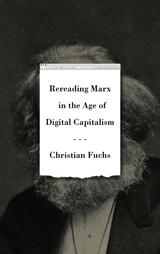 Rereading Marx in the Age of Digital Capitalism
Christian Fuchs
Pluto Press, 2019 The 'end of history' has not taken place. Ideological and economic crisis and the status quo of neoliberal capitalism since 2008 demand a renewed engagement with Marx. But if we are to effectively resist capitalism we must truly understand Marx: Marxism today must theorise how communication technologies, media representation and digitalisation have come to define contemporary capitalism. There is an urgent need for critical, Marxian-inspired knowledge as a foundation for changing the world and the way we communicate from digital capitalism towards communicative socialism and digital communism. Rereading Marx in the Age of Digital Capitalism does exactly this. Delving into Marx's most influential works, such as Capital, The Grundrisse, Economic and Philosophic Manuscripts, The German Ideology and The Communist Manifesto, Christian Fuchs draws out Marx's concepts of machinery, technology, communication and ideology, all of which anticipate major themes of the digital age. A concise and coherent work of Marxist media and communication theory, the book ultimately demonstrates the relevance of Marx to an age of digital and communicative capitalism.
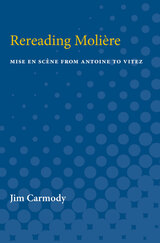 Rereading Moliere: Mise en Scène from Antoine to Vitez
Jim Carmody
University of Michigan Press, 1993 Rereading Molière: Mise en Scène from Antoine to Vitez investigates the strategies employed by some of the most influential French directors of the present century to create radical interpretations of Molière's classic texts. At the same time, the book explores how these reinterpretations of Molière's popular comedies have articulated a revisionist version of French cultural history.The book focuses on five productions of two Molière plays: André Antoine's and Jacque Arnavon's 1907 Tartuffe, Arnavon's 1936 School for Wives, Roger Planchon's two productions of Tartuffe in the 1960s and 1970s, and Antoine Vitez's Molière tetralogy of 1978. These productions represent not only some of the best stagings of Molière in this century, but also key moments in the history of French theater, as each one marks an important development in the ways that plays from the classical period were staged in France. Taken together, these productions constitute an almost century-long exploration of the status and identity of "the classics" in twentieth-century French theater. At the same time, these productions reveal an abiding interest in exploring the ever-shifting understanding of the Grand Siècle, the Golden Age of the seventeenth century, as a value in modern and contemporary French culture.Rereading Molière examines a range of critical issues: the relationship between director and playwright as manifested in directors' attitudes to the classic text; developments in directors' strategies for adapting the dramaturgy and scenography of the 1660s to the aesthetics of the twentieth century; and developments in directors' responses to the ideologies of "fidelity" and "realism."
 Re-reading Poets: The Life of the Author
Paul Kameen
University of Pittsburgh Press, 2010
In Re-reading Poets, Paul Kameen offers a deep reflection on the importance of poets and poetry to the reader. Through his historical, philosophical, scholarly, and personal commentary on select poems, Kameen reveals how these works have helped him form a personal connection to each individual poet. He relates their profound impact not only on his own life spent reading, teaching, and writing poetry, but also their potential to influence the lives of readers at every level.
In an examination of works by William Wordsworth, Samuel Taylor Coleridge, Walt Whitman, and others, Kameen seeks to sense each author’s way of seeing, so that author and reader may meet in a middle ground outside of their own entities where life and art merge in deeply intimate ways. Kameen counters ideologies such as New Criticism and poststructuralism that marginalize the author, and instead focuses on the author as a vital presence in the interpretive process. He analyzes how readers look to the past via “tradition,” conceptualizing history in ways that pre-process texts and make it difficult to connect directly to authors. In this vein, Kameen employs examples from T. S. Eliot, Martin Heidegger, and Mikhail Bakhtin.
Kameen examines how people become poets and how that relates to the process of actually writing poems. He tells of his own evolution as a poet and argues for poetry as a means to an end beyond the poetic, rather than an end in itself. In Re-reading Poets, Kameen’s goal is not to create a new dictum for teaching poetry, but rather to extend poetry’s appeal to an audience far beyond academic walls.
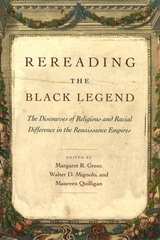 Rereading the Black Legend: The Discourses of Religious and Racial Difference in the Renaissance Empires
Edited by Margaret R. Greer, Walter D. Mignolo, and Maureen Quilligan
University of Chicago Press, 2008 The phrase “The Black Legend” was coined in 1912 by a Spanish journalist in protest of the characterization of Spain by other Europeans as a backward country defined by ignorance, superstition, and religious fanaticism, whose history could never recover from the black mark of its violent conquest of the Americas. Challenging this stereotype, Rereading the Black Legend contextualizes Spain’s uniquely tarnished reputation by exposing the colonial efforts of other nations whose interests were served by propagating the “Black Legend.”
A distinguished group of contributors here examine early modern imperialisms including the Ottomans in Eastern Europe, the Portuguese in East India, and the cases of Mughal India and China, to historicize the charge of unique Spanish brutality in encounters with indigenous peoples during the Age of Exploration. The geographic reach and linguistic breadth of this ambitious collection will make it a valuable resource for any discussion of race, national identity, and religious belief in the European Renaissance.
Rereading the Fossil Record: The Growth of Paleobiology as an Evolutionary Discipline
David Sepkoski
University of Chicago Press, 2012 Rereading the Fossil Record presents the first-ever historical account of the origin, rise, and importance of paleobiology, from the mid-nineteenth century to the late 1980s. Drawing on a wealth of archival material, David Sepkoski shows how the movement was conceived and promoted by a small but influential group of paleontologists and examines the intellectual, disciplinary, and political dynamics involved in the ascendency of paleobiology. By tracing the role of computer technology, large databases, and quantitative analytical methods in the emergence of paleobiology, this book also offers insight into the growing prominence and centrality of data-driven approaches in recent science.
Rereading the Machine in the Garden: Nature and Technology in American Culture
Edited by Eric C. Erbacher, Nicole Maruo-Schröder, and Florian Sedlmeier
Campus Verlag, 2014 This book reexamines the trope of the machine in the garden first laid out in one of the founding texts of American studies by Leo Marx fifty years ago. The contributors to this volume explore the lasting influence of this concept on American culture and the arts, rereading it as a dialectic wherein nature is as much technologized as technology is naturalized. Extending the relevance of Marx’s theory from the nineteenth to twenty-first centuries, they examine filmic and literary representations of industrial, bureaucratic, and digital gardens; explore its role in the aftermath of the Civil War and of rural electrification during the New Deal; its significance in landscape art as well as in ethnic literatures; and discuss the historical premises and continued impact of Leo Marx’s groundbreaking study.
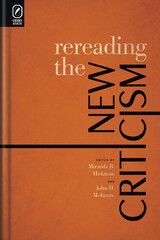 Rereading the New Criticism
Edited by Miranda B. Hickman and John D. McIntyre
Ohio State University Press, 2012 Committed to rigorous “close reading” and engagement with the “text itself” rather than information “extrinsic” to the text, John Crowe Ransom and a group of colleagues in the American South of the 1930s established a vanguard approach to literary criticism they called the “New Criticism.” By the 1940s, New Critical methods had become the dominant pedagogy in departments of English at colleges and universities across America, enjoying disciplinary hegemony until the late 1960s, when an influx of new theoretical work in literary studies left the New Criticism in shadow. Inspired by a range of new commentary reconsidering the New Criticism (from critics including Jane Gallop, Terry Eagleton, Charles Altieri, and Camille Paglia), the essays in Rereading the New Criticism reevaluate the New Critical corpus, trace its legacy, and explore resources it might offer for the future of theory, criticism, and pedagogy. Addressing the work of New Critics such as Ransom, Cleanth Brooks, and Robert Penn Warren, as well as important forerunners of the New Critics such as I. A. Richards and William Empson, these ten essays shed new light on the genesis of the New Criticism and its significant contributions to the development of academic literary studies in North America; revisit its chief arguments and methods; interrogate received ideas about the movement; and consider how its theories and techniques might inform new methodologies for literary and cultural studies in the twenty-first century.
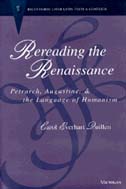 Rereading the Renaissance: Petrarch, Augustine, and the Language of Humanism
Carol Everhart Quillen
University of Michigan Press, 1998 Although Francesco Petrarca's position as the "father" of Italian Renaissance humanism has long been acknowledged, the specific meanings of his works and his legacy remain matters of controversy. Basic questions about the tension between his devotion to secular pursuits and his respect for religious withdrawal, about the authenticity of his ostensibly autobiographical writings, and about his relationship to scholasticism still provoke sustained debate. Rereading the Renaissance, a study of Petrarch's uses of Augustine, uses methods drawn from history and literary criticism to establish a framework for exploring Petrarch's humanism by approaching it through it central practices of reading and writing.
Carol Quillen argues that the essential role of Augustine's words and authority in the expression of Petrarch's humanism is best grasped through a study of the complex textual practices exemplified in the writings of both men. Petrarch's reliance on Augustine is most evident in his ways of reading and in his strategies of argument. Secondly, she maintains that Petrarch's appropriation of Augustine's words is only intelligible in light of his struggle to legitimate his cultural ideals in the face of compelling opposition. Finally, Quillen shows how Petrarch's uses of Augustine can simultaneously uphold his humanist ideals and challenge the legitimacy of the assumptions on which those ideals were founded.
Interdisciplinary in scope and method, this volume speaks to important debates that span the humanities. Scholars of literary and historical studies, as well as those in the fields of classical studies, patristics, and comparative literature, will find in Rereading the Renaissance a solid contribution to their interests.
Carol Everhart Quillen is Associate Professor of History, Rice University.
 Rereading the Revolution: The Turn-of-the-Century American Revolutionary War Novel
Anita Lawson
University of Wisconsin Press, 2000 Approximately fifty historical novels dealing with the American Revolution were published in the United States from 1896 to 1906. Benjamin S. Lawson critically examines the narrative strategies employed in these works and the ways in which fiction is made to serve the purpose of vivifying national history.
Writing within the conventions of the historical romance, these authors created plots that reflect the enveloping concerns of the War for Independence, such as the young American woman who often must choose between suitors on opposite sides in the wider conflict.
Lawson concludes that these works reassured readers of the worth of an Anglo-American heritage. They were escapist fantasies to the degree that they failed to confront contemporary realities of crisis and change: the New Immigration, urbanization and industrialization, labor strife, the plight of the poor, and agitation on behalf of women and ethnic minorities.
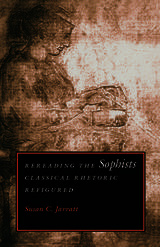 Rereading the Sophists: Classical Rhetoric Refigured
Susan C. Jarratt
Southern Illinois University Press, 1998 This book is a critically informed challenge to the traditional histories of rhetoric and to the current emphasis on Aristotle and Plato as the most significant classical voices in rhetoric. In it, Susan C. Jarratt argues that the first sophists—a diverse group of traveling intellectuals in the fifth century B.C.—should be given a more prominent place in the study of rhetoric and composition. Rereading the ancient sophists, she creates a new lens through which to see contemporary social issues, including the orality/literacy debate, feminist writing, deconstruction, and writing pedagogy. The sophists’ pleasure in the play of language, their focus on historical contin-gency, and the centrality of their teaching for democratic practice were sufficiently threatening to their successors Plato and Aristotle that both sought to bury the sophists under philosophical theories of language. The censure of Plato and Aris-totle set a pattern for historical views of the sophists for centuries. Following Hegel and Nietzsche, Jarratt breaks the pattern, finding in the sophists a more progressive charter for teachers and scholars of reading and writing, as well as for those in the adjacent disciplines of literary criticism and theory, education, speech communication, and ancient history. In tracing the historical interpretations of sophistic rhetoric, Jarratt suggests that the sophists themselves provide the outlines of an alternative to history-writing as the discovery and recounting of a set of stable facts. She sees sophistic use of narrative in argument as a challenge to a simple division between orality and literacy, current discussions of which virtually ignore the sophists. Outlining similarities between écriture féminine and sophistic style, Jarratt shows that contemporary feminisms have more in common with sophists than just a style; they share a rhetorical basis for deployment of theory in political action. In her final chapter, Jarratt takes issue with accounts of sophistic pedagogy focusing on technique and the development of the individual. She argues that, despite its employment by powerful demagogues, sophistic pedagogy offers a resource for today’s teachers interested in encouraging minority voices of resistance through language study as the practice of democracy.
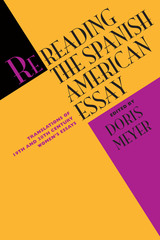 Rereading the Spanish American Essay: Translations of 19th and 20th Century Women’s Essays
Edited by Doris Meyer
University of Texas Press, 1995 Latin American intellectual history is largely founded on essayistic writing. Women's essays have always formed a part of this rich tradition, yet they have seldom received the respect they merit and are often omitted entirely from anthologies. This volume and its earlier companion, Reinterpreting the Spanish American Essay: Women Writers of the 19th and 20th Centuries, seek to remedy that neglect. This book collects thirty-six notable essays by twenty-two women writers, including Flora Tristan, Gertrudis Gómez de Avellaneda, Clorinda Matto de Turner, Victoria Ocampo, Alfonsina Storni, Rosario Ferré, Christina Peri Rossi, and Elena Poniatowska. All of the essays are here translated into English for the first time, many by the same scholars who wrote critical studies of the authors in the first volume. Each author's work is also prefaced by a brief biographical sketch.
The Reredos of All Souls College Oxford
Edited by Peregrine Horden
Paul Holberton Publishing, 2021 The reredos of the fifteenth-century chapel of All Souls College Oxford, with its combination of medieval niches and statuary by George Gilbert Scott, has remained one of the unsung glories of both medieval perpendicular architecture and Victorian restoration. Informed by recent scientific investigation of its stonework and its surviving medieval polychromy, this volume follows the reredos from the phases of its medieval and early Tudor construction, through its covering up with a succession of baroque and neoclassical decorative schemes, to its uncovering and restoration in the 1870s. Through a sweeping survey of the chapel’s architectural and decorative history, this book provides a novel and revealing vantage point on the artistic, cultural, and ecclesiological history of Britain across four centuries.
Reruns
Jonathan Baumbach
University of Alabama Press, 1974
Res: Anthropology and Aesthetics, 1: Spring 1981
Francesco Pellizzi
Harvard University Press Res is a journal of anthropology and comparative aesthetics dedicated to the study of the object, in particular cult and belief objects and objects of art. The journal presents contributions by philosophers, art historians, archaeologists, critics, linguists, architects, artists, and others. Its field of inquiry is open to all cultures, regions, and historical periods. Res also publishes iconographic and textual documents important to the history and theory of the arts.
Res appears twice yearly, in the spring and autumn. The journal is edited by Francesco Pellizzi. More information about Res is available at www.res-journal.org.
Res: Anthropology and Aesthetics, 10: Autumn 1985
Francesco Pellizzi
Harvard University Press Res is a journal of anthropology and comparative aesthetics dedicated to the study of the object, in particular cult and belief objects and objects of art. The journal presents contributions by philosophers, art historians, archaeologists, critics, linguists, architects, artists, and others. Its field of inquiry is open to all cultures, regions, and historical periods. Res also publishes iconographic and textual documents important to the history and theory of the arts.
Res appears twice yearly, in the spring and autumn. The journal is edited by Francesco Pellizzi. More information about Res is available at www.res-journal.org.
Res: Anthropology and Aesthetics, 11: Spring 1986
Francesco Pellizzi
Harvard University Press Res is a journal of anthropology and comparative aesthetics dedicated to the study of the object, in particular cult and belief objects and objects of art. The journal presents contributions by philosophers, art historians, archaeologists, critics, linguists, architects, artists, and others. Its field of inquiry is open to all cultures, regions, and historical periods. Res also publishes iconographic and textual documents important to the history and theory of the arts.
Res appears twice yearly, in the spring and autumn. The journal is edited by Francesco Pellizzi. More information about Res is available at www.res-journal.org.
Res: Anthropology and Aesthetics, 12: Autumn 1986
Francesco Pellizzi
Harvard University Press Res is a journal of anthropology and comparative aesthetics dedicated to the study of the object, in particular cult and belief objects and objects of art. The journal presents contributions by philosophers, art historians, archaeologists, critics, linguists, architects, artists, and others. Its field of inquiry is open to all cultures, regions, and historical periods. Res also publishes iconographic and textual documents important to the history and theory of the arts.
Res appears twice yearly, in the spring and autumn. The journal is edited by Francesco Pellizzi. More information about Res is available at www.res-journal.org.
Res: Anthropology and Aesthetics, 13: Spring 1987
Francesco Pellizzi
Harvard University Press Res is a journal of anthropology and comparative aesthetics dedicated to the study of the object, in particular cult and belief objects and objects of art. The journal presents contributions by philosophers, art historians, archaeologists, critics, linguists, architects, artists, and others. Its field of inquiry is open to all cultures, regions, and historical periods. Res also publishes iconographic and textual documents important to the history and theory of the arts.
Res appears twice yearly, in the spring and autumn. The journal is edited by Francesco Pellizzi. More information about Res is available at www.res-journal.org.
Res: Anthropology and Aesthetics, 14: Autumn 1987
Francesco Pellizzi
Harvard University Press Res is a journal of anthropology and comparative aesthetics dedicated to the study of the object, in particular cult and belief objects and objects of art. The journal presents contributions by philosophers, art historians, archaeologists, critics, linguists, architects, artists, and others. Its field of inquiry is open to all cultures, regions, and historical periods. Res also publishes iconographic and textual documents important to the history and theory of the arts.
Res appears twice yearly, in the spring and autumn. The journal is edited by Francesco Pellizzi. More information about Res is available at www.res-journal.org.
Res: Anthropology and Aesthetics, 15: Spring 1988
Francesco Pellizzi
Harvard University Press Res is a journal of anthropology and comparative aesthetics dedicated to the study of the object, in particular cult and belief objects and objects of art. The journal presents contributions by philosophers, art historians, archaeologists, critics, linguists, architects, artists, and others. Its field of inquiry is open to all cultures, regions, and historical periods. Res also publishes iconographic and textual documents important to the history and theory of the arts.
Res appears twice yearly, in the spring and autumn. The journal is edited by Francesco Pellizzi. More information about Res is available at www.res-journal.org.
Res: Anthropology and Aesthetics, 16: Autumn 1988
Francesco Pellizzi
Harvard University Press Res is a journal of anthropology and comparative aesthetics dedicated to the study of the object, in particular cult and belief objects and objects of art. The journal presents contributions by philosophers, art historians, archaeologists, critics, linguists, architects, artists, and others. Its field of inquiry is open to all cultures, regions, and historical periods. Res also publishes iconographic and textual documents important to the history and theory of the arts.
Res appears twice yearly, in the spring and autumn. The journal is edited by Francesco Pellizzi. More information about Res is available at www.res-journal.org.
Res: Anthropology and Aesthetics, 17 & 18: Spring/Autumn 1989
Francesco Pellizzi
Harvard University Press Res is a journal of anthropology and comparative aesthetics dedicated to the study of the object, in particular cult and belief objects and objects of art. The journal presents contributions by philosophers, art historians, archaeologists, critics, linguists, architects, artists, and others. Its field of inquiry is open to all cultures, regions, and historical periods. Res also publishes iconographic and textual documents important to the history and theory of the arts.
Res appears twice yearly, in the spring and autumn. The journal is edited by Francesco Pellizzi. More information about Res is available at www.res-journal.org.
Res: Anthropology and Aesthetics, 2: Autumn 1981
Francesco Pellizzi
Harvard University Press Res is a journal of anthropology and comparative aesthetics dedicated to the study of the object, in particular cult and belief objects and objects of art. The journal presents contributions by philosophers, art historians, archaeologists, critics, linguists, architects, artists, and others. Its field of inquiry is open to all cultures, regions, and historical periods. Res also publishes iconographic and textual documents important to the history and theory of the arts.
Res appears twice yearly, in the spring and autumn. The journal is edited by Francesco Pellizzi. More information about Res is available at www.res-journal.org.
Res: Anthropology and Aesthetics, 29 & 30: Spring/Autumn 1996: The Pre-Columbian
Francesco Pellizzi
Harvard University Press Res is a journal of anthropology and comparative aesthetics dedicated to the study of the object, in particular cult and belief objects and objects of art. The journal presents contributions by philosophers, art historians, archaeologists, critics, linguists, architects, artists, and others. Its field of inquiry is open to all cultures, regions, and historical periods. Res also publishes iconographic and textual documents important to the history and theory of the arts.
Res appears twice yearly, in the spring and autumn. The journal is edited by Francesco Pellizzi. More information about Res is available at www.res-journal.org.
Res: Anthropology and Aesthetics, 31: Spring 1997: The Abject
Francesco Pellizzi
Harvard University Press Res is a journal of anthropology and comparative aesthetics dedicated to the study of the object, in particular cult and belief objects and objects of art. The journal presents contributions by philosophers, art historians, archaeologists, critics, linguists, architects, artists, and others. Its field of inquiry is open to all cultures, regions, and historical periods. Res also publishes iconographic and textual documents important to the history and theory of the arts.
Res appears twice yearly, in the spring and autumn. The journal is edited by Francesco Pellizzi. More information about Res is available at www.res-journal.org.
Res: Anthropology and Aesthetics, 32: Autumn 1997: Tradition, Translation, Treason
Francesco Pellizzi
Harvard University Press Res is a journal of anthropology and comparative aesthetics dedicated to the study of the object, in particular cult and belief objects and objects of art. The journal presents contributions by philosophers, art historians, archaeologists, critics, linguists, architects, artists, and others. Its field of inquiry is open to all cultures, regions, and historical periods. Res also publishes iconographic and textual documents important to the history and theory of the arts.
Res appears twice yearly, in the spring and autumn. The journal is edited by Francesco Pellizzi. More information about Res is available at www.res-journal.org.
Res: Anthropology and Aesthetics, 33: Spring 1998: Pre-Columbian States of Being
Francesco Pellizzi
Harvard University Press Res is a journal of anthropology and comparative aesthetics dedicated to the study of the object, in particular cult and belief objects and objects of art. The journal presents contributions by philosophers, art historians, archaeologists, critics, linguists, architects, artists, and others. Its field of inquiry is open to all cultures, regions, and historical periods. Res also publishes iconographic and textual documents important to the history and theory of the arts.
Res appears twice yearly, in the spring and autumn. The journal is edited by Francesco Pellizzi. More information about Res is available at www.res-journal.org.
Res: Anthropology and Aesthetics, 34: Autumn 1998: Architecture
Francesco Pellizzi
Harvard University Press Res is a journal of anthropology and comparative aesthetics dedicated to the study of the object, in particular cult and belief objects and objects of art. The journal presents contributions by philosophers, art historians, archaeologists, critics, linguists, architects, artists, and others. Its field of inquiry is open to all cultures, regions, and historical periods. Res also publishes iconographic and textual documents important to the history and theory of the arts.
Res appears twice yearly, in the spring and autumn. The journal is edited by Francesco Pellizzi. More information about Res is available at www.res-journal.org.
Res: Anthropology and Aesthetics, 35: Spring 1999: Intercultural China
Francesco Pellizzi
Harvard University Press Res is a journal of anthropology and comparative aesthetics dedicated to the study of the object, in particular cult and belief objects and objects of art. The journal presents contributions by philosophers, art historians, archaeologists, critics, linguists, architects, artists, and others. Its field of inquiry is open to all cultures, regions, and historical periods. Res also publishes iconographic and textual documents important to the history and theory of the arts.
Res appears twice yearly, in the spring and autumn. The journal is edited by Francesco Pellizzi. More information about Res is available at www.res-journal.org.
Res: Anthropology and Aesthetics, 36: Autumn 1999: Factura
Francesco Pellizzi
Harvard University Press Res is a journal of anthropology and comparative aesthetics dedicated to the study of the object, in particular cult and belief objects and objects of art. The journal presents contributions by philosophers, art historians, archaeologists, critics, linguists, architects, artists, and others. Its field of inquiry is open to all cultures, regions, and historical periods. Res also publishes iconographic and textual documents important to the history and theory of the arts.
Res appears twice yearly, in the spring and autumn. The journal is edited by Francesco Pellizzi. More information about Res is available at www.res-journal.org.
Res: Anthropology and Aesthetics, 37: Spring 2000
Francesco Pellizzi
Harvard University Press Res is a journal of anthropology and comparative aesthetics dedicated to the study of the object, in particular cult and belief objects and objects of art. The journal presents contributions by philosophers, art historians, archaeologists, critics, linguists, architects, artists, and others. Its field of inquiry is open to all cultures, regions, and historical periods. Res also publishes iconographic and textual documents important to the history and theory of the arts.
Res appears twice yearly, in the spring and autumn. The journal is edited by Francesco Pellizzi. More information about Res is available at www.res-journal.org.
Res: Anthropology and Aesthetics, 38: Autumn 2000
Francesco Pellizzi
Harvard University Press Res is a journal of anthropology and comparative aesthetics dedicated to the study of the object, in particular cult and belief objects and objects of art. The journal presents contributions by philosophers, art historians, archaeologists, critics, linguists, architects, artists, and others. Its field of inquiry is open to all cultures, regions, and historical periods. Res also publishes iconographic and textual documents important to the history and theory of the arts.
Res appears twice yearly, in the spring and autumn. The journal is edited by Francesco Pellizzi. More information about Res is available at www.res-journal.org.
Res: Anthropology and Aesthetics, 39: Spring 2001: African Works
Francesco Pellizzi
Harvard University Press Res is a journal of anthropology and comparative aesthetics dedicated to the study of the object, in particular cult and belief objects and objects of art. The journal presents contributions by philosophers, art historians, archaeologists, critics, linguists, architects, artists, and others. Its field of inquiry is open to all cultures, regions, and historical periods. Res also publishes iconographic and textual documents important to the history and theory of the arts.
Res appears twice yearly, in the spring and autumn. The journal is edited by Francesco Pellizzi. More information about Res is available at www.res-journal.org.
Res: Anthropology and Aesthetics, 40: Autumn 2001: Desedimenting Time
Francesco Pellizzi
Harvard University Press Res is a journal of anthropology and comparative aesthetics dedicated to the study of the object, in particular cult and belief objects and objects of art. The journal presents contributions by philosophers, art historians, archaeologists, critics, linguists, architects, artists, and others. Its field of inquiry is open to all cultures, regions, and historical periods. Res also publishes iconographic and textual documents important to the history and theory of the arts.
Res appears twice yearly, in the spring and autumn. The journal is edited by Francesco Pellizzi. More information about Res is available at www.res-journal.org.
Res: Anthropology and Aesthetics, 41: Spring 2002
Francesco Pellizzi
Harvard University Press Res is a journal of anthropology and comparative aesthetics dedicated to the study of the object, in particular cult and belief objects and objects of art. The journal presents contributions by philosophers, art historians, archaeologists, critics, linguists, architects, artists, and others. Its field of inquiry is open to all cultures, regions, and historical periods. Res also publishes iconographic and textual documents important to the history and theory of the arts.
Res appears twice yearly, in the spring and autumn. The journal is edited by Francesco Pellizzi. More information about Res is available at www.res-journal.org.
Res: Anthropology and Aesthetics, 42: Autumn 2002: West by Nonwest
Francesco Pellizzi
Harvard University Press Res is a journal of anthropology and comparative aesthetics dedicated to the study of the object, in particular cult and belief objects and objects of art. The journal presents contributions by philosophers, art historians, archaeologists, critics, linguists, architects, artists, and others. Its field of inquiry is open to all cultures, regions, and historical periods. Res also publishes iconographic and textual documents important to the history and theory of the arts.
Res appears twice yearly, in the spring and autumn. The journal is edited by Francesco Pellizzi. More information about Res is available at www.res-journal.org.
Res: Anthropology and Aesthetics, 43: Spring 2003: Islamic Arts
Francesco Pellizzi
Harvard University Press, 2003 Res is a journal of anthropology and comparative aesthetics dedicated to the study of the object, in particular cult and belief objects and objects of art. The journal presents contributions by philosophers, art historians, archaeologists, critics, linguists, architects, artists, and others. Its field of inquiry is open to all cultures, regions, and historical periods. Res also publishes iconographic and textual documents important to the history and theory of the arts.
Res appears twice yearly, in the spring and autumn. The journal is edited by Francesco Pellizzi. More information about Res is available at www.res-journal.org.
Res: Anthropology and Aesthetics, 44: Autumn 2003
Francesco Pellizzi
Harvard University Press Res is a journal of anthropology and comparative aesthetics dedicated to the study of the object, in particular cult and belief objects and objects of art. The journal presents contributions by philosophers, art historians, archaeologists, critics, linguists, architects, artists, and others. Its field of inquiry is open to all cultures, regions, and historical periods. Res also publishes iconographic and textual documents important to the history and theory of the arts.
Res appears twice yearly, in the spring and autumn. The journal is edited by Francesco Pellizzi. More information about Res is available at www.res-journal.org.
Res: Anthropology and Aesthetics, 45: Spring 2004
Francesco Pellizzi
Harvard University Press Res is a journal of anthropology and comparative aesthetics dedicated to the study of the object, in particular cult and belief objects and objects of art. The journal presents contributions by philosophers, art historians, archaeologists, critics, linguists, architects, artists, and others. Its field of inquiry is open to all cultures, regions, and historical periods. Res also publishes iconographic and textual documents important to the history and theory of the arts.
Res appears twice yearly, in the spring and autumn. The journal is edited by Francesco Pellizzi. More information about Res is available at www.res-journal.org.
Res: Anthropology and Aesthetics, 46: Autumn 2004: Polemical Objects
Francesco Pellizzi
Harvard University Press Res is a journal of anthropology and comparative aesthetics dedicated to the study of the object, in particular cult and belief objects and objects of art. The journal presents contributions by philosophers, art historians, archaeologists, critics, linguists, architects, artists, and others. Its field of inquiry is open to all cultures, regions, and historical periods. Res also publishes iconographic and textual documents important to the history and theory of the arts.
Res appears twice yearly, in the spring and autumn. The journal is edited by Francesco Pellizzi. More information about Res is available at www.res-journal.org.
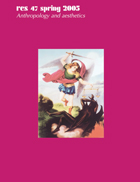 Res: Anthropology and Aesthetics, 47: Spring 2005
Francesco Pellizzi
Harvard University Press, 2005 The contents of this issue are: Editorial, "Socrates' death," by Remo Guidieri; "Antimasque, Pageant: Restoration and Bethlem at Moorfields," by Christine Stevenson; "Picturing Madness in 1905: Giacomo Balla's La Pazza and the cycle The Living," by Christine Poggi; "Quoting Eros: Visual culture, irony and anachronism in Thomas Mann," by Filippo Fimiani; "Cosmos and warfare on a Classic Maya vase," by Oswaldo Chinchilla; "Women and political power: The inclusion and exclusion of noblewomen in Aztec pictorial histories," by Lori Boornazian Diel; "Ancestors and commemoration in Igbo Odo masquerades," by Benjamin Hufbauer and Bess Reed; "Style and the standardization of forms in certain arts of the Sepik," by Romain Chambrin; "The modality of time-maps: Quilting in the Pacific from another point of view," by Susanne Kuechler; Lectures, Documents and Discussions: "Slit drums on Atchin;" an unpublished manuscript by John Layard, edited and with an introduction by Haidy Geismar; "Style and meaning: Abelam art through Yolngu eyes," The 1998 Anthony Forge Lecture, by Howard Morphy; "Vodou in the age of mechanical reproduction," by Donald Cosentino; and "Heterosomatics: Remarks of an historian of women's bodies," by Barbara Duden.
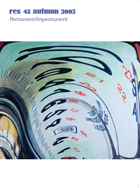 Res: Anthropology and Aesthetics, 48: Autumn 2005: Permanent/Impermanent
Francesco Pellizzi
Harvard University Press, 2005 The contents of this issue are: “Between Creation and Destruction,” by Finbarr Barry Flood and Zoë Sara Strother; “People Have Three Eyes: Ephemeral Art and the Archive in Southeastern Nigeria,” by Sarah Adams; “Beyond Monument Lies Empire: Mapping Songhay Space in Tenth- to Sixteenth-Century West Africa,” by Kristina Van Dyke; “Censorship and Iconoclasm—Unsettling Monuments,” by John Peffer; “Recycling Icons and Bodies in Chinese Anti-Buddhist Persecutions,” by Eric Reinders; “Modifications of Ancient Maya Sculpture,” by Bryan R. Just; “Roman Oscilla: An Assessment,” by Rabun Taylor; “Turning Tale into Vision: Time and Image in the Divina Commedia,” by Gervase Rosser; “Building outside Time in Alberti’s De re aedificatoria,” by Marvin Trachtenberg; and “Restoration as Re-creation at the Sainte-Chapelle,” by Meredith Cohen; and the documents and discussions “The Constitution of Pleasure: François-Joseph Belanger and the Chateau de Bagatelle,” by Taha Al-Douri; “Composing Vinteuil: Proust’s Unheard Music,” by Mauro Carbone; “Diskotel 1967: Israel and the Western Wall in the Aftermath of the Six Day War,” by Daniel Bertrand Monk; “The ‘Kulturbolschewiken’ I: Fluxus, the Abolition of Art, the Soviet Union, and ‘Pure Amusement,’” by Cuauhtémoc Medina; and “Aby Warburg in America Again: With an Edition of His Unpublished Correspondence with Edwin R. A. Seligman (1927–1928),” by Davide Stimilli.
Res: Anthropology and Aesthetics, 49/50: Spring/Autumn 2006
Francesco Pellizzi
Harvard University Press, 2006 Res: Anthropology and Aesthetic is a journal of anthropology and comparative aesthetics dedicated to the study of the object, in particular cult and belief objects and objects of art. The journal brings together, in an anthropological perspective, contributions by philosophers, art historians, archaeologists, critics, linguists, architects, artists, and others. Its field of inquiry is open to all cultures, regions, and historical periods. Res also publishes textual and iconographic documents important to the history and theory of the arts.
Res: Anthropology and Aesthetics, 5: Spring 1983
Francesco Pellizzi
Harvard University Press Res is a journal of anthropology and comparative aesthetics dedicated to the study of the object, in particular cult and belief objects and objects of art. The journal presents contributions by philosophers, art historians, archaeologists, critics, linguists, architects, artists, and others. Its field of inquiry is open to all cultures, regions, and historical periods. Res also publishes iconographic and textual documents important to the history and theory of the arts.
Res appears twice yearly, in the spring and autumn. The journal is edited by Francesco Pellizzi. More information about Res is available at www.res-journal.org.
Res: Anthropology and Aesthetics, 51: Spring 2007
Francesco Pellizzi
Harvard University Press, 2007 Res: Anthropology and Aesthetics is a journal of anthropology and comparative aesthetics dedicated to the study of the object, in particular cult and belief objects and objects of art. The journal brings together, in an anthropological perspective, contributions by philosophers, art historians, archaeologists, critics, linguists, architects, artists, and others. Its field of inquiry is open to all cultures, regions, and historical periods. Res also publishes textual and iconographic documents important to the history and theory of the arts.
Volume 51 includes articles by Michael W. Meister, Michele Matteini, Ladislav Kesner, Yukio Lippit, Xavier Urcid, Anna Anquissola, Bissera Pentcheva, Friedrich T. Bach, Daniel Sherer, Noga Arikha, Erika Naginski, Haim Finkelstein, Nuit Banai, Laura Ilea, and Remo Guidieri.
Res: Anthropology and Aesthetics, 52: Fall 2007
Francesco Pellizzi
Harvard University Press, 2007 Res: Anthropology and Aesthetics is a journal of anthropology and comparative aesthetics dedicated to the study of the object, in particular cult and belief objects and objects of art. The journal brings together, in an anthropological perspective, contributions by philosophers, art historians, archaeologists, critics, linguists, architects, artists, and others. Its field of inquiry is open to all cultures, regions, and historical periods. Res also publishes textual and iconographic documents important to the history and theory of the arts.
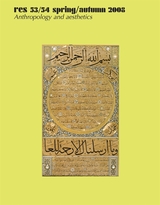 Res: Anthropology and Aesthetics, 53/54: Spring and Autumn 2008
Francesco Pellizzi
Harvard University Press, 2008 This double volume includes: The value of forgery, Jonathan Hay; Affective operations of art and literature, Ernst van Alphen; Betty’s Turn, Stephen Melville; Richard Serra in Germany, Magdalena Nieslony; Beheadings and massacres, Federico Navarrete; Pliny the Elder and the identity of Roman art, Francesco de Angelis; Between nature and artifice, Francesca Dell’Acqua; Narrative cartographies, Gerald Guest; The artist and the icon, Alexander Nagel; Preliminary thoughts on Piranesi and Vico, Erika Naginski; Portable ruins, Alina Payne; Istanbul: The palimpsest city in search of its archi-text, Nebahat Avcioglu; The iconicity of Islamic calligraphy in Turkey, Irvin Cemil Schick; The Buddha’s house, Kazi Khalid Ashraf; A flash of recognition into how not to be governed, Natasha Eaton; Hasegawa’s fairy tales, Christine Guth; The paradox of the ethnographic-superaltern, Anna Brzyski, and contributions to “Lectures, Documents and Discussions” by Karen Kurczyncki, Mary Dumett, Emmanuel Alloa, Francesco Pellizzi, and Boris Groys.
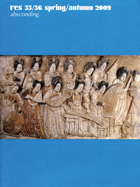 Res: Anthropology and Aesthetics, 55/56: Absconding
Francesco Pellizzi
Harvard University Press, 2009 This volume includes the editorial “The absconded subject of Pop,” by Thomas Crow; “Enlivening the soul in Chinese tombs,” by Wu Hung; “On the ‘true body’ of Huineng,” by Michele Matteini; “Apparition painting,” by Yukio Lippit; “Immanence out of sight,” by Joyce Cheng; “Absconding in plain sight,” by Roberta Bonetti; “Ancient Maya sculptures of Tikal, seen and unseen,” by Megan E. O’Neil; “Style and substance, or why the Cacaxtla paintings were buried,” by Claudia Brittenham; “The Parthenon frieze,” by Clemente Marconi; “Roma sotterranea and the biogenesis of New Jerusalem,” by Irina Oryshkevich; “Out of sight, yet still in place,” by Minou Schraven; “Behind closed doors,” by Melissa R. Katz; “Moving eyes,” by Bissera V. Pentcheva; “‘A secret kind of charm not to be expressed or discerned,’” by Rebecca Zorach; “Ivory towers,” by Richard Taws; “Boxed in,” by Miranda Lash; “A concrete experience of nothing,” by William S. Smith; “Believing in art,” by Irene V. Small; “Repositories of the unconditional,” by Gabriele Guercio; “From micro/macrocosm to the aesthetics of ruins and waste-bodies,” by Jeanette Zwingenberger; “Are shadows transparent?” by Roberto Casati; “Invisibility of the digital,” by Boris Groys; “Des formes et des catégories,” by Remo Guidieri; and “Further comments on ‘Absconding,’” by Francesco Pellizzi.
|
|


